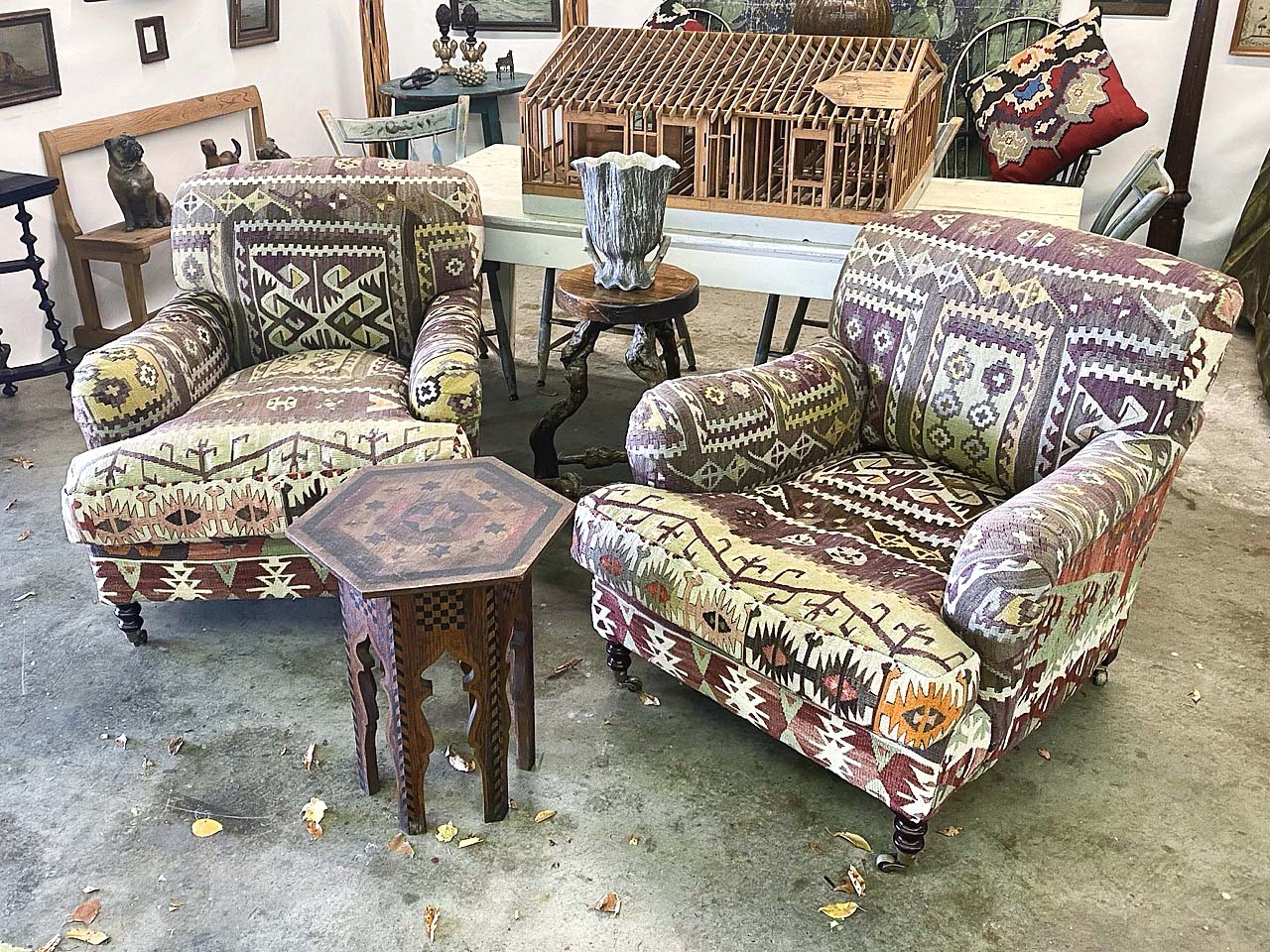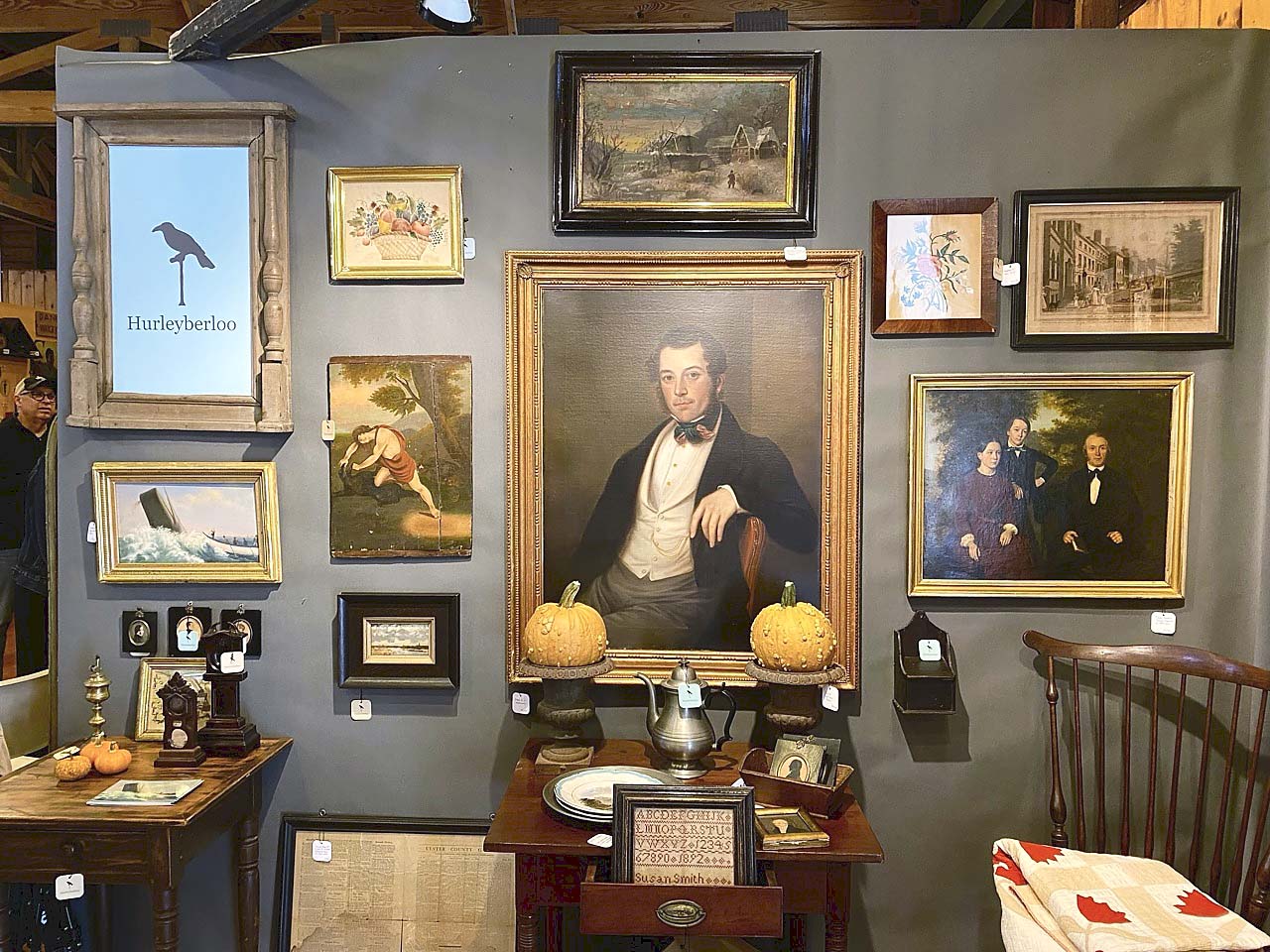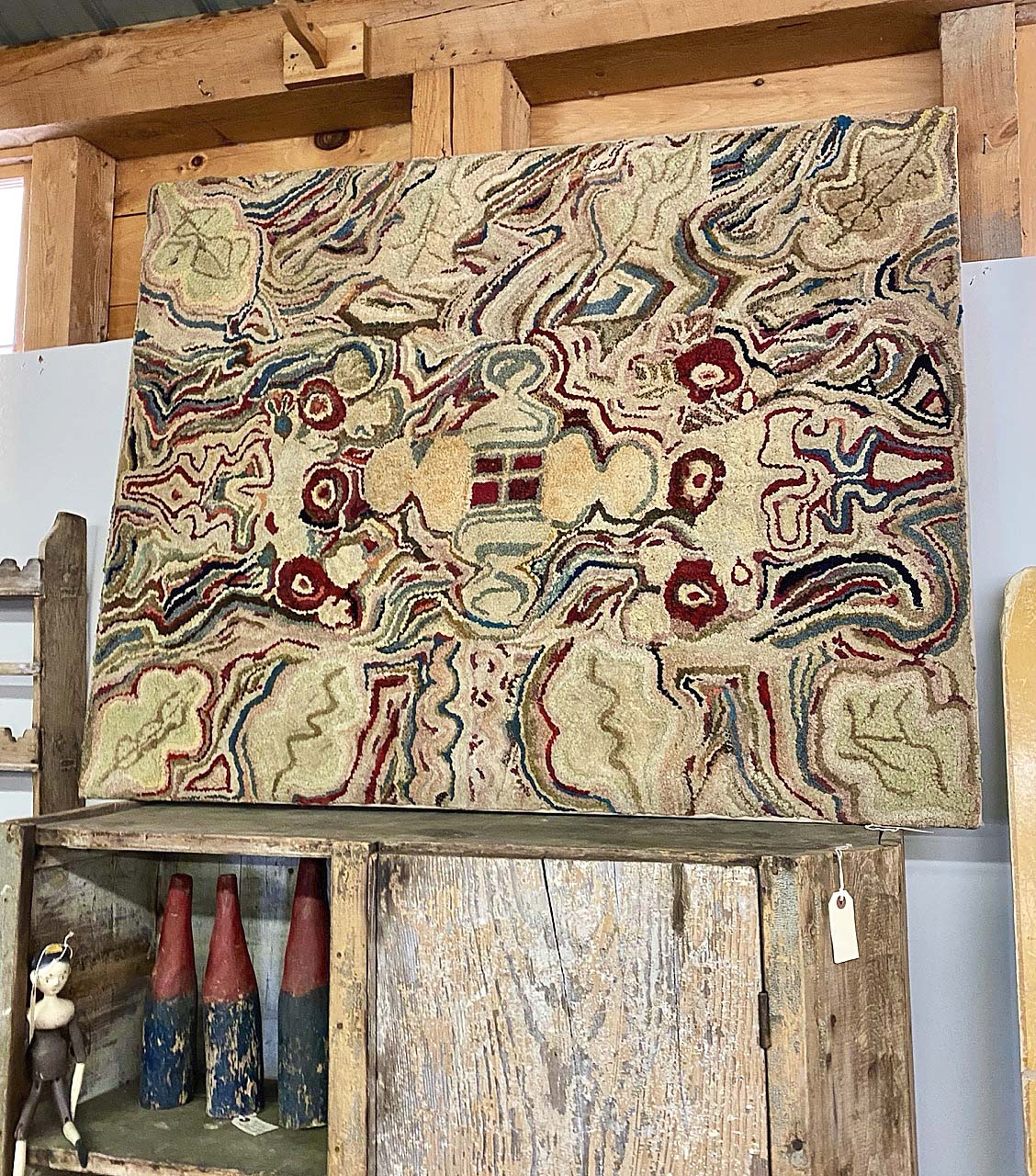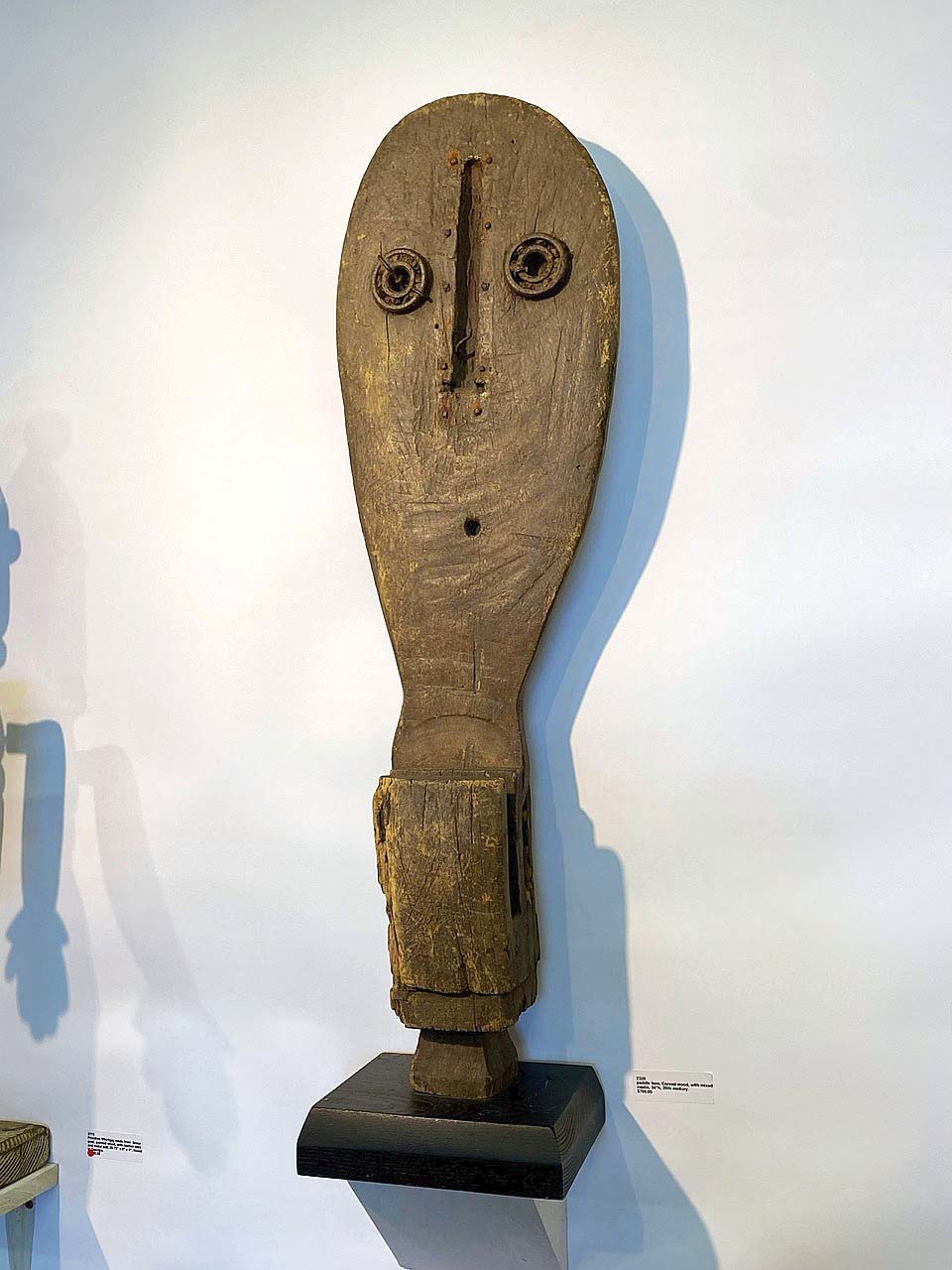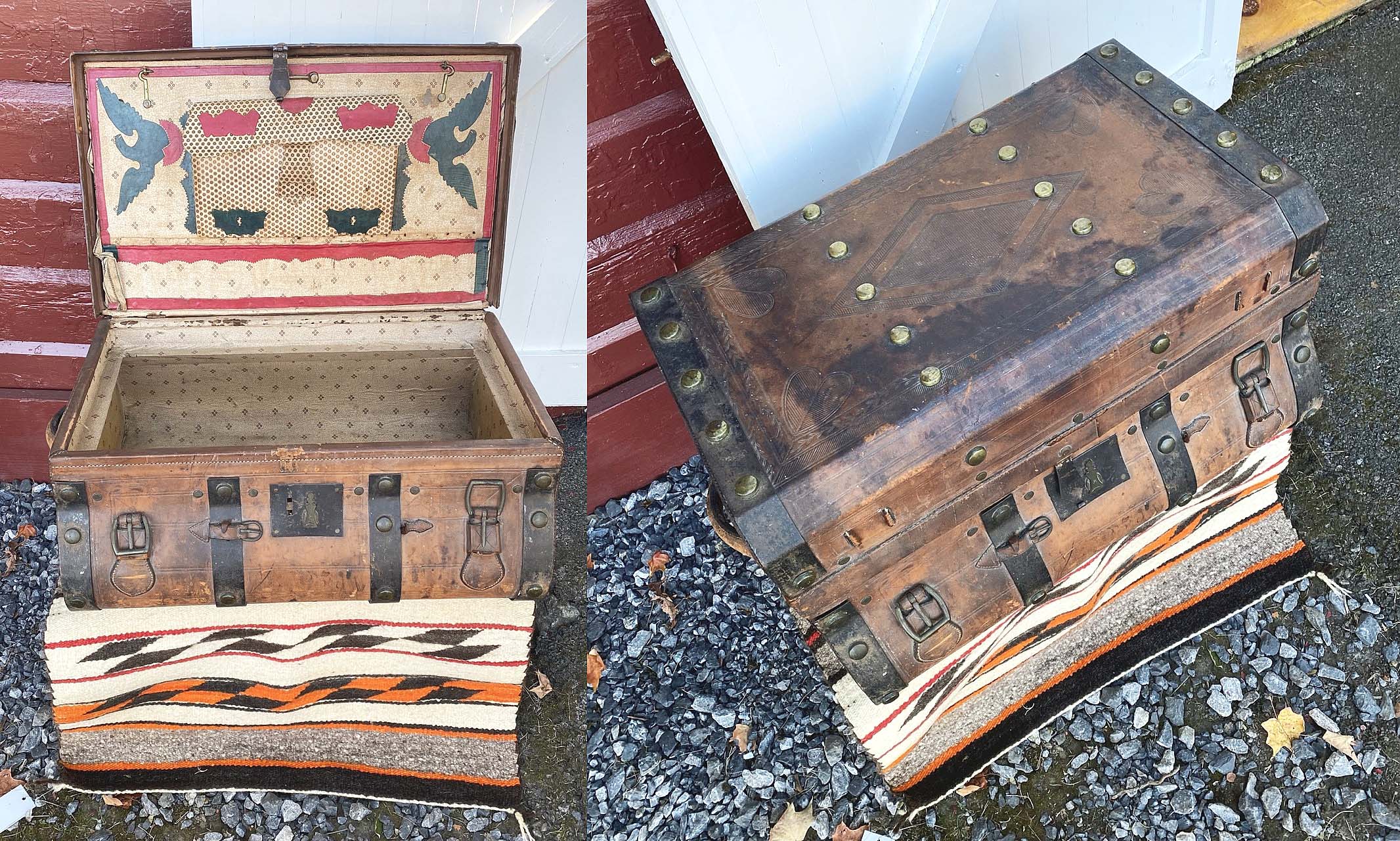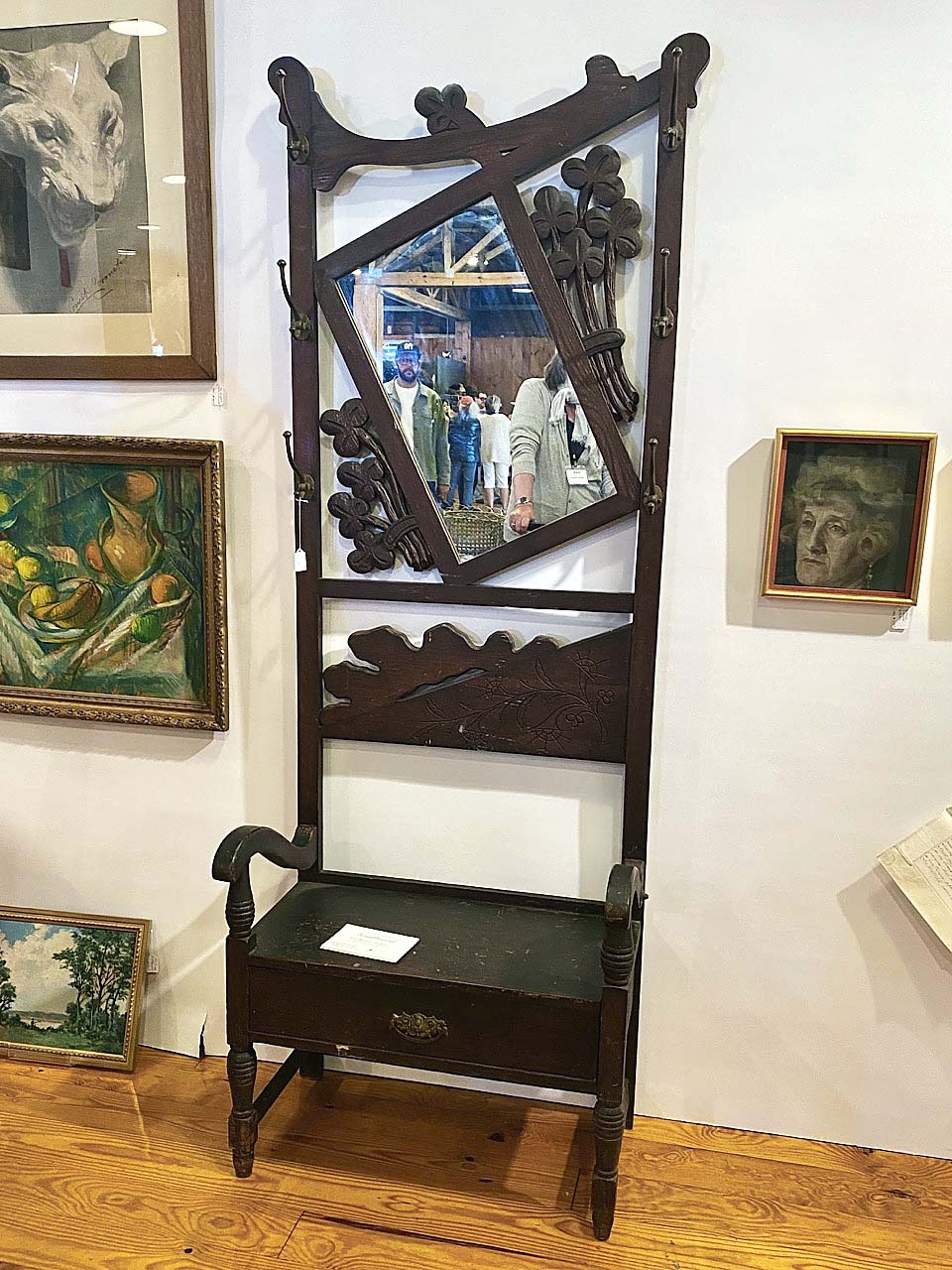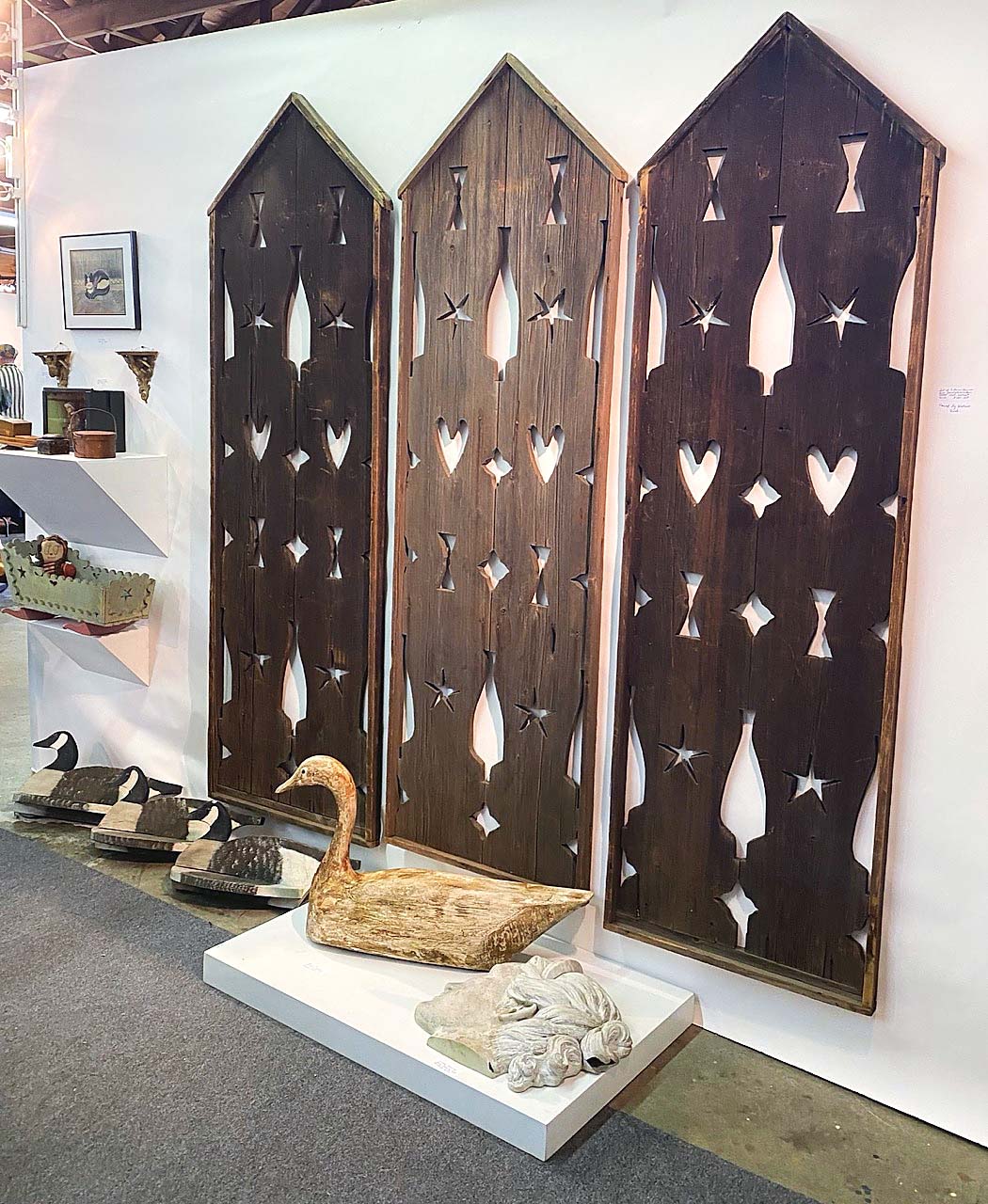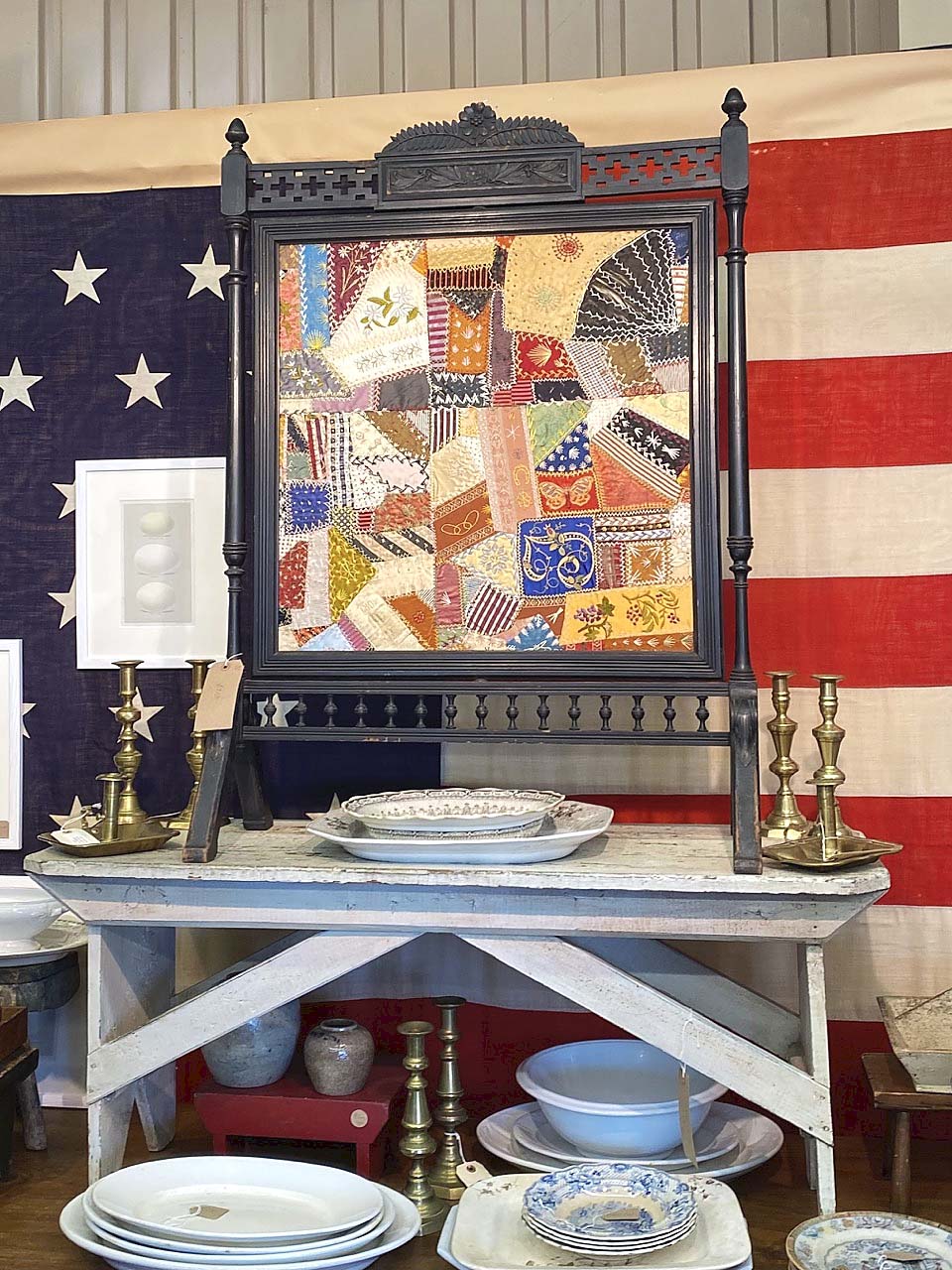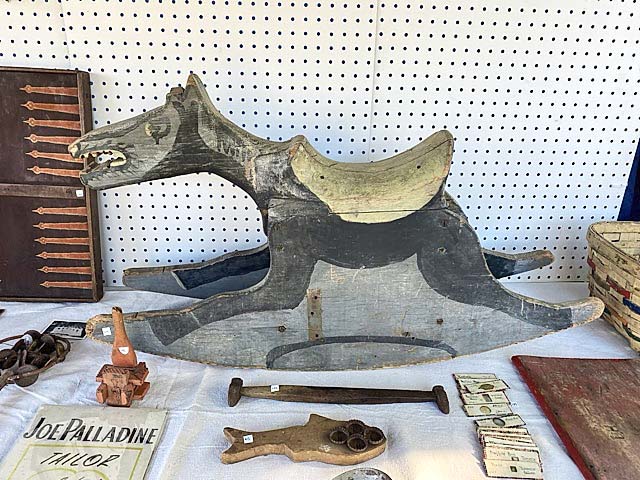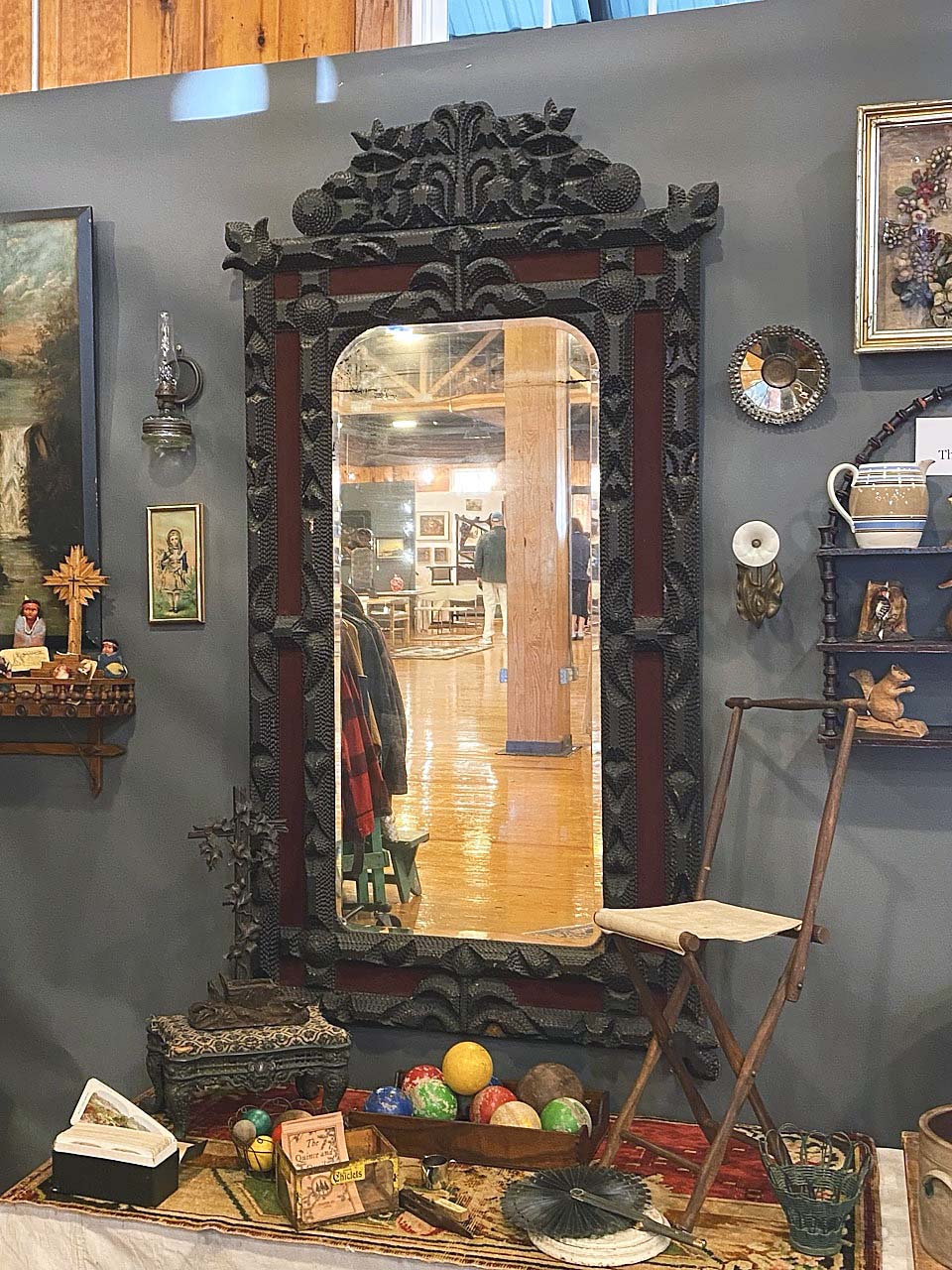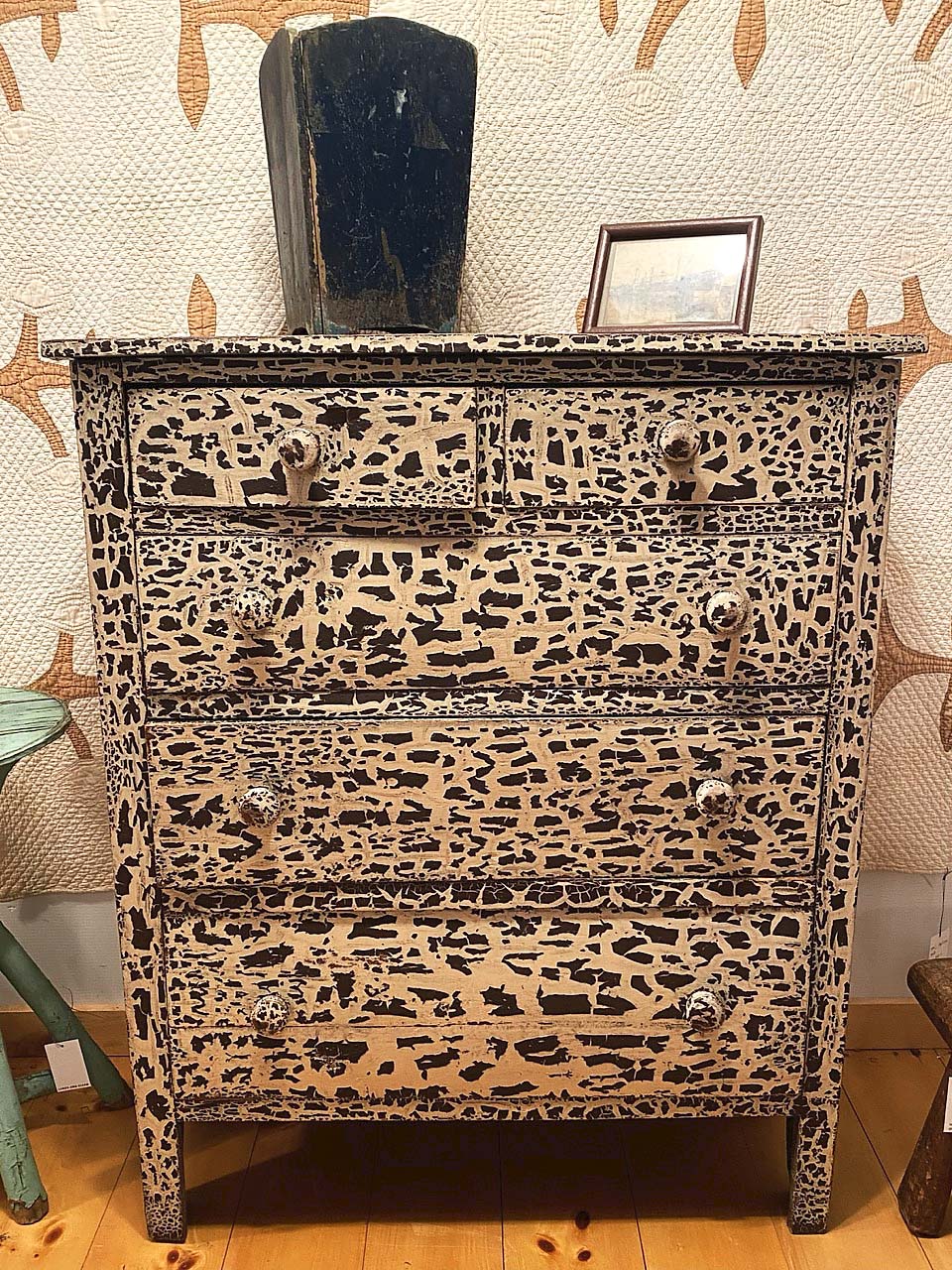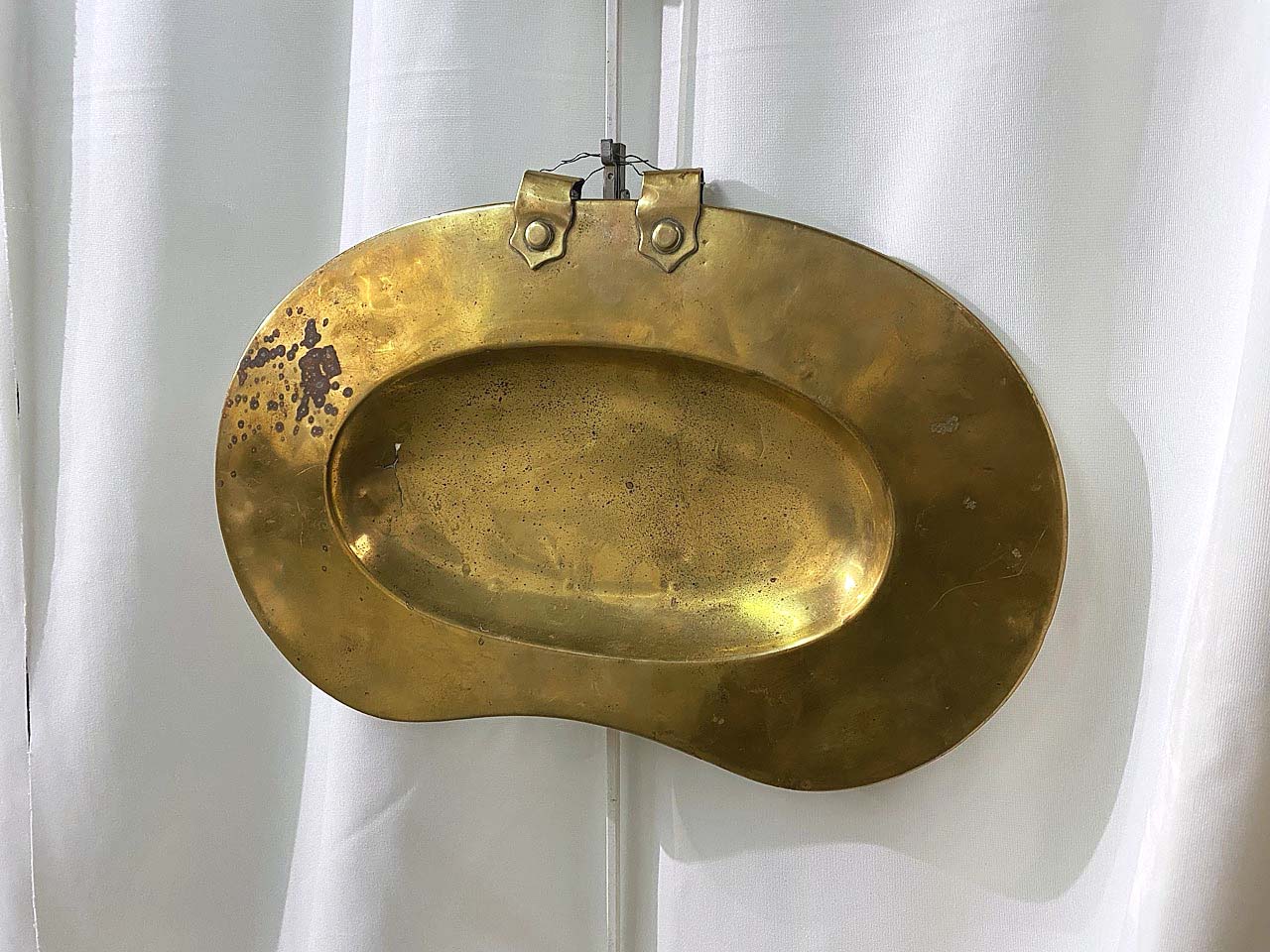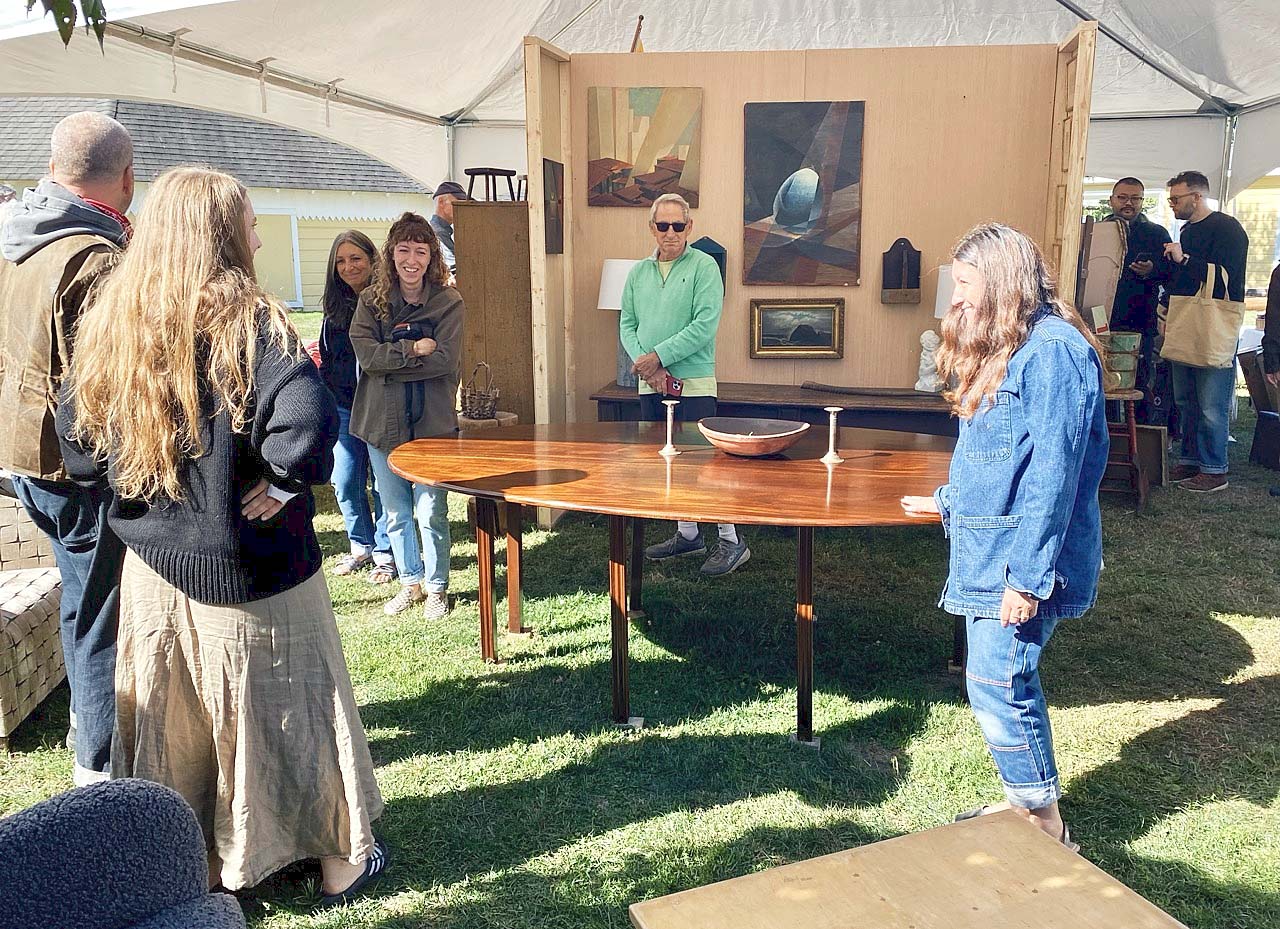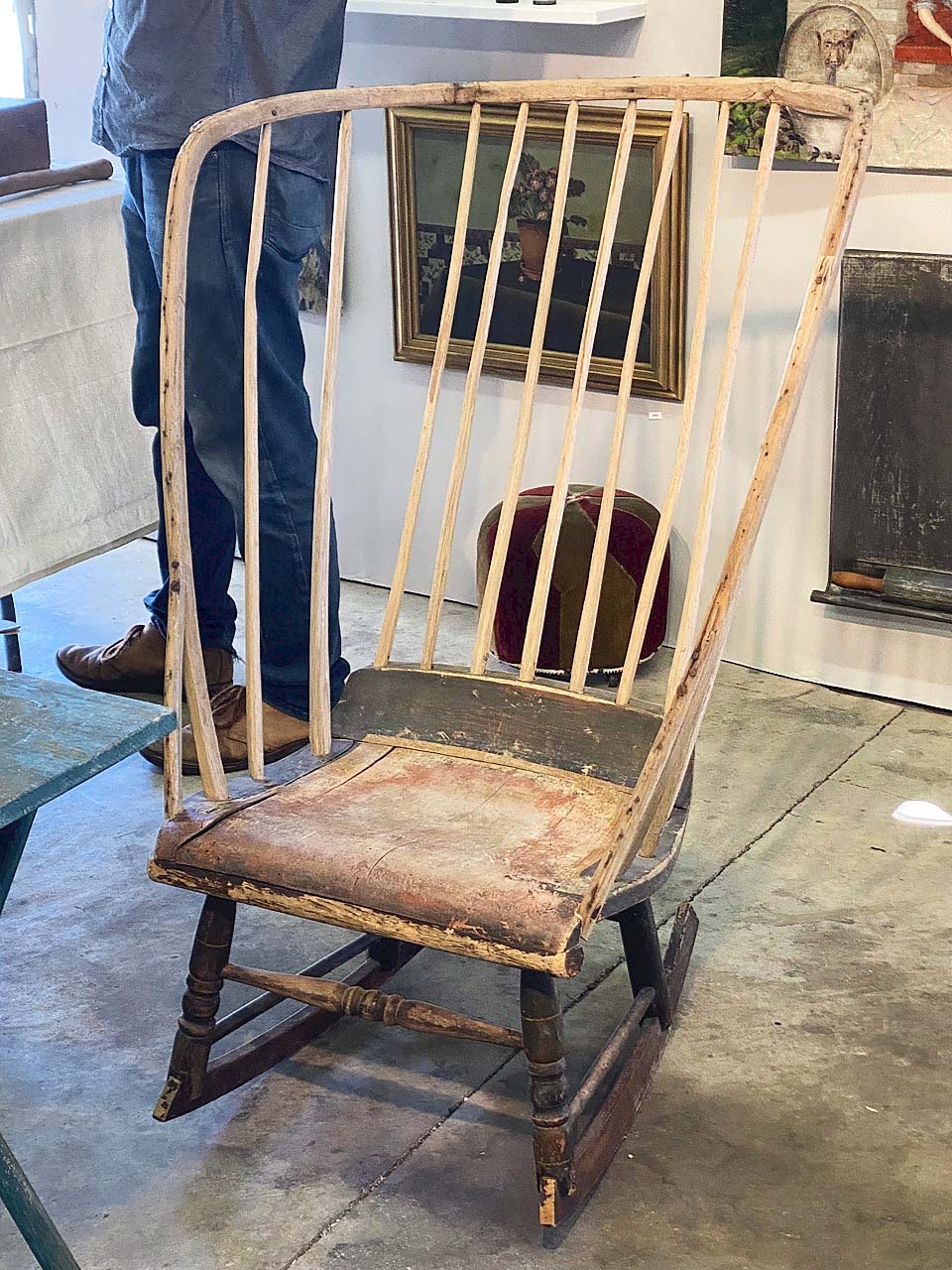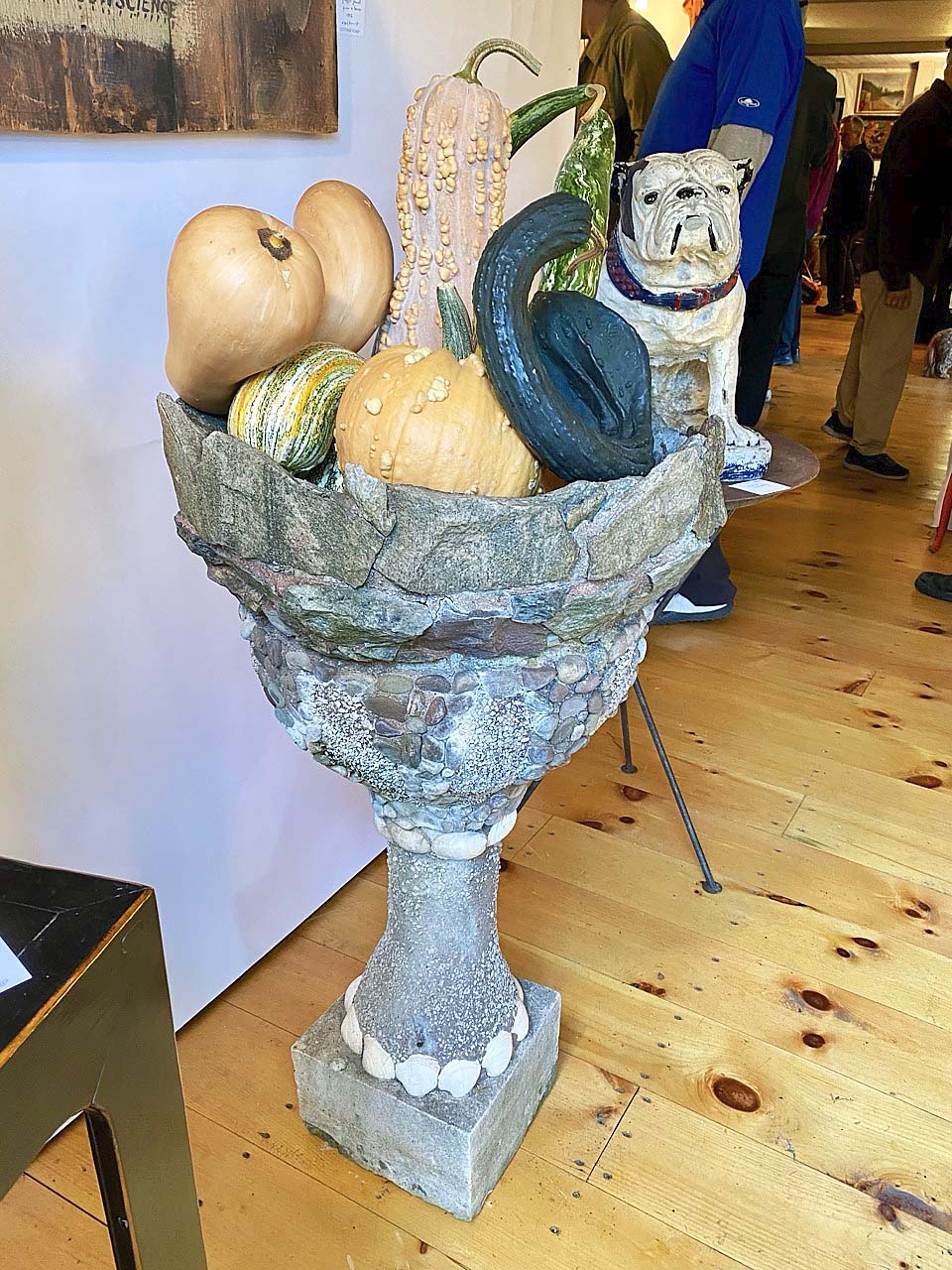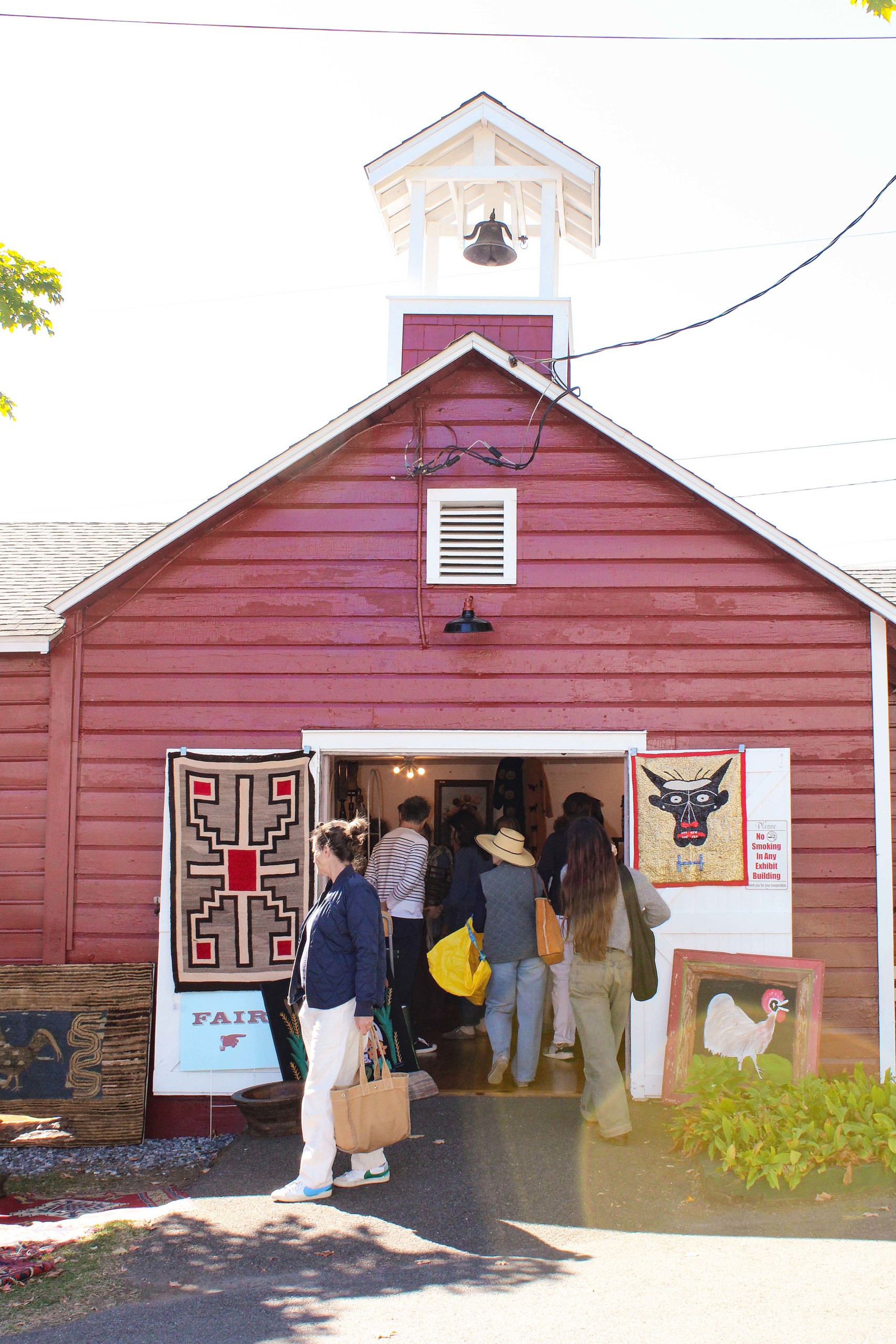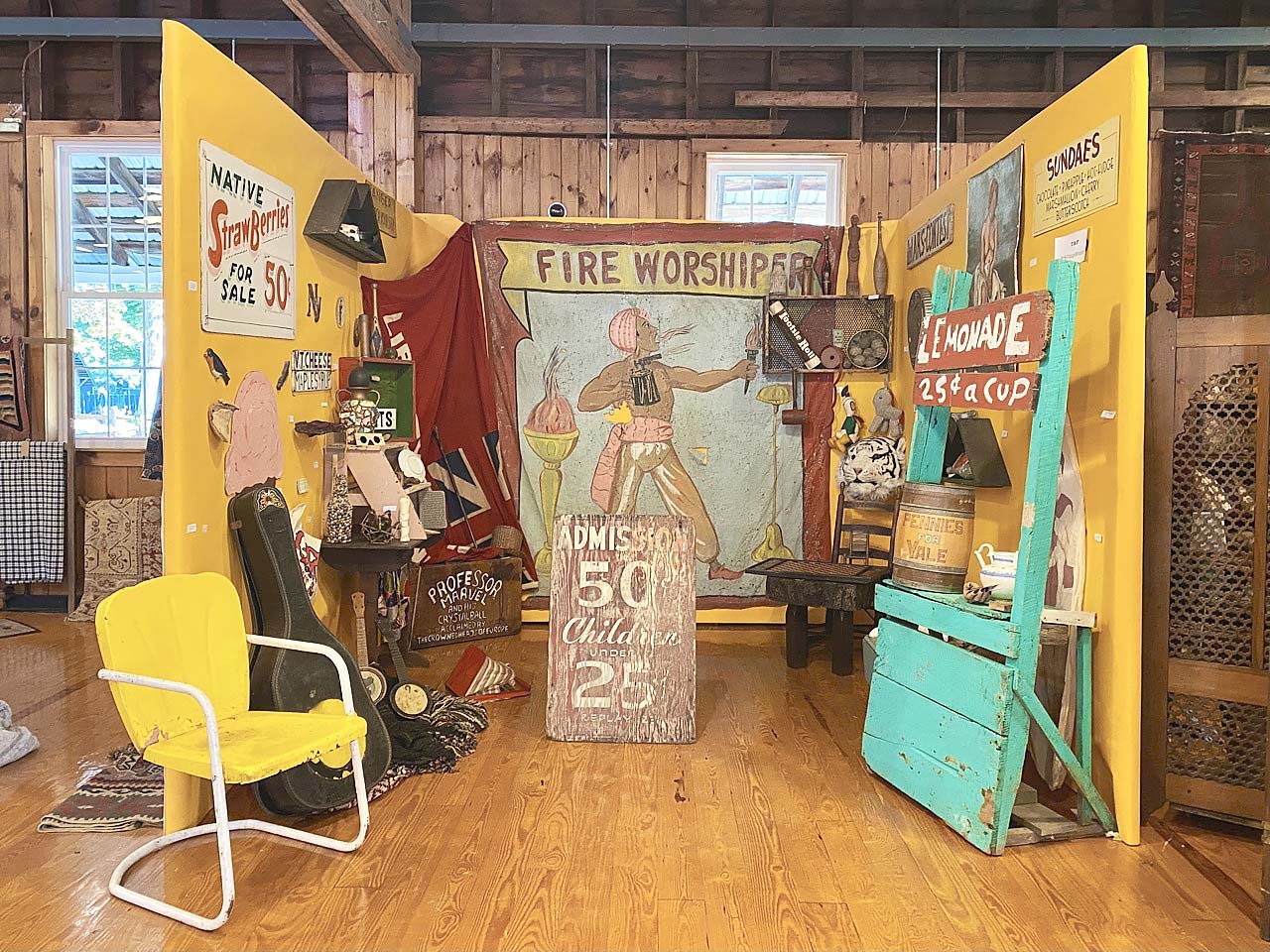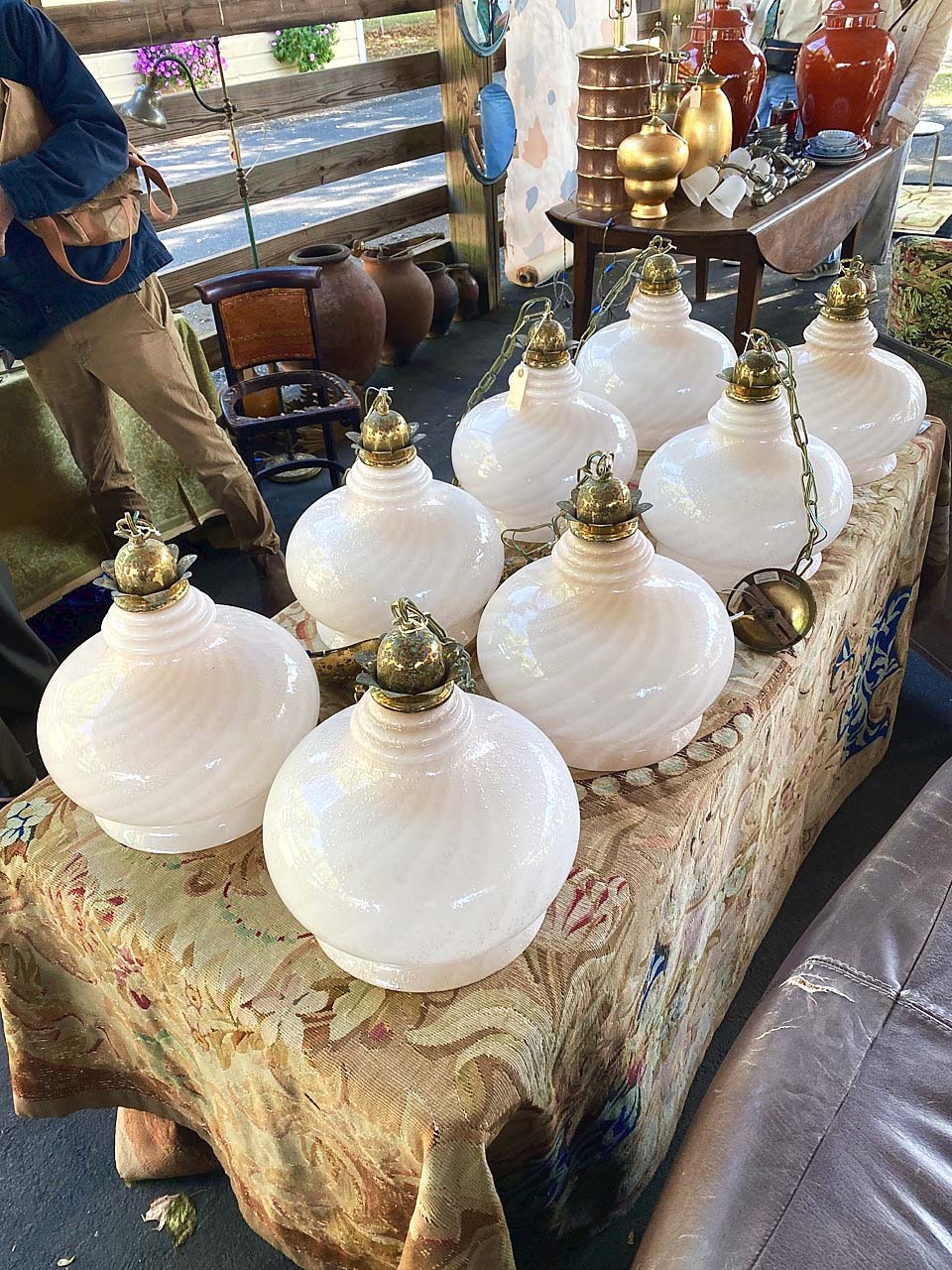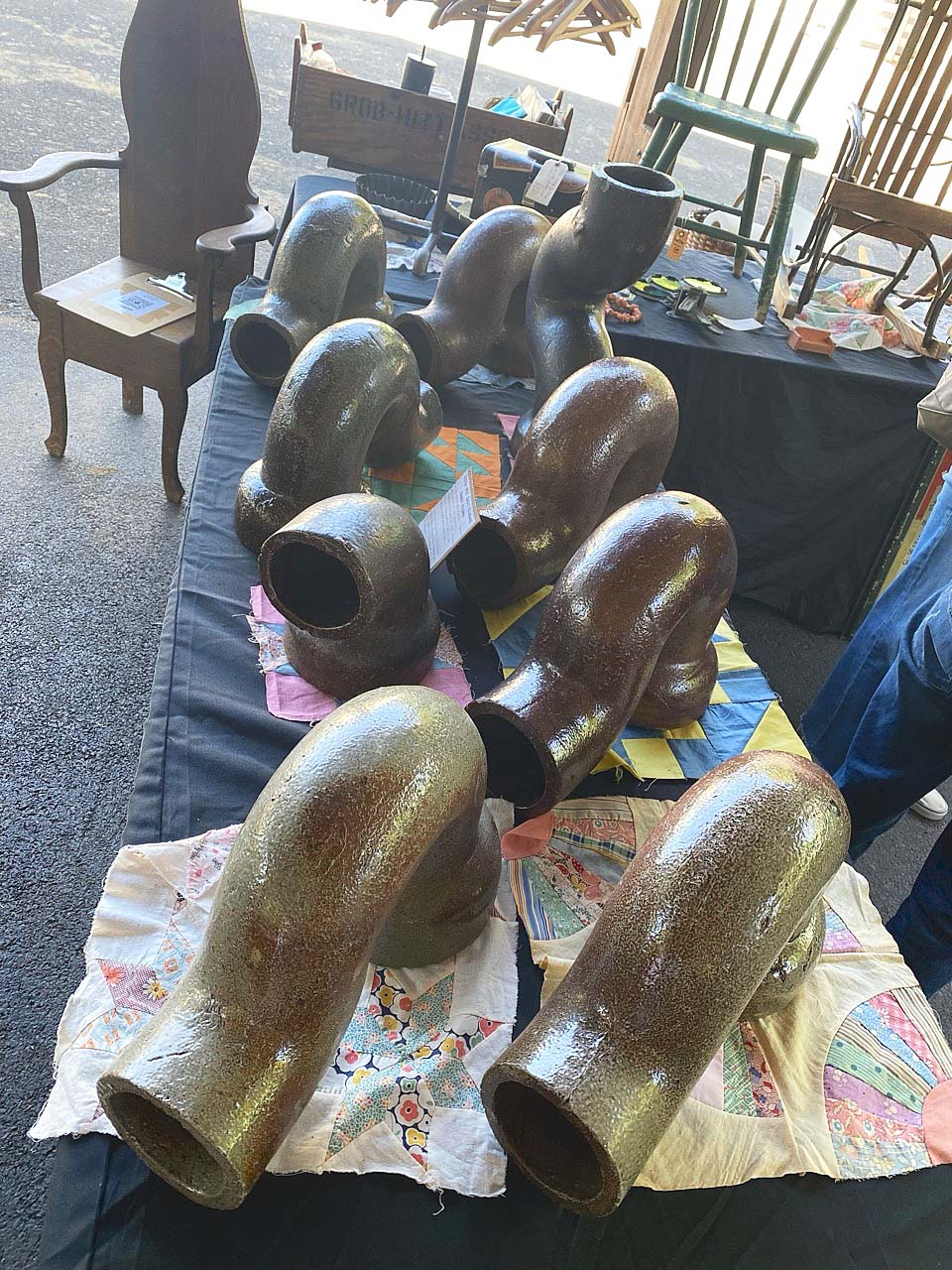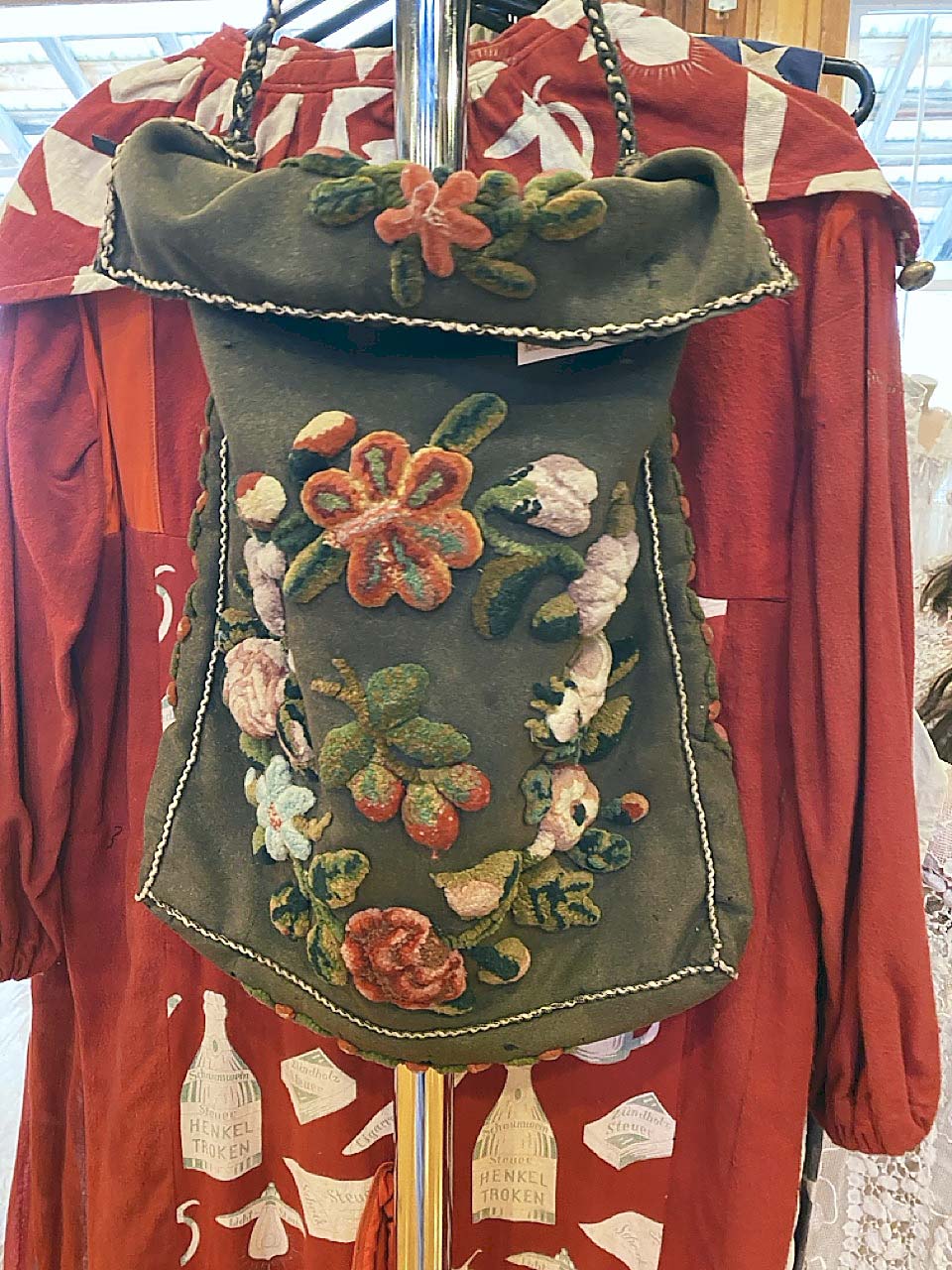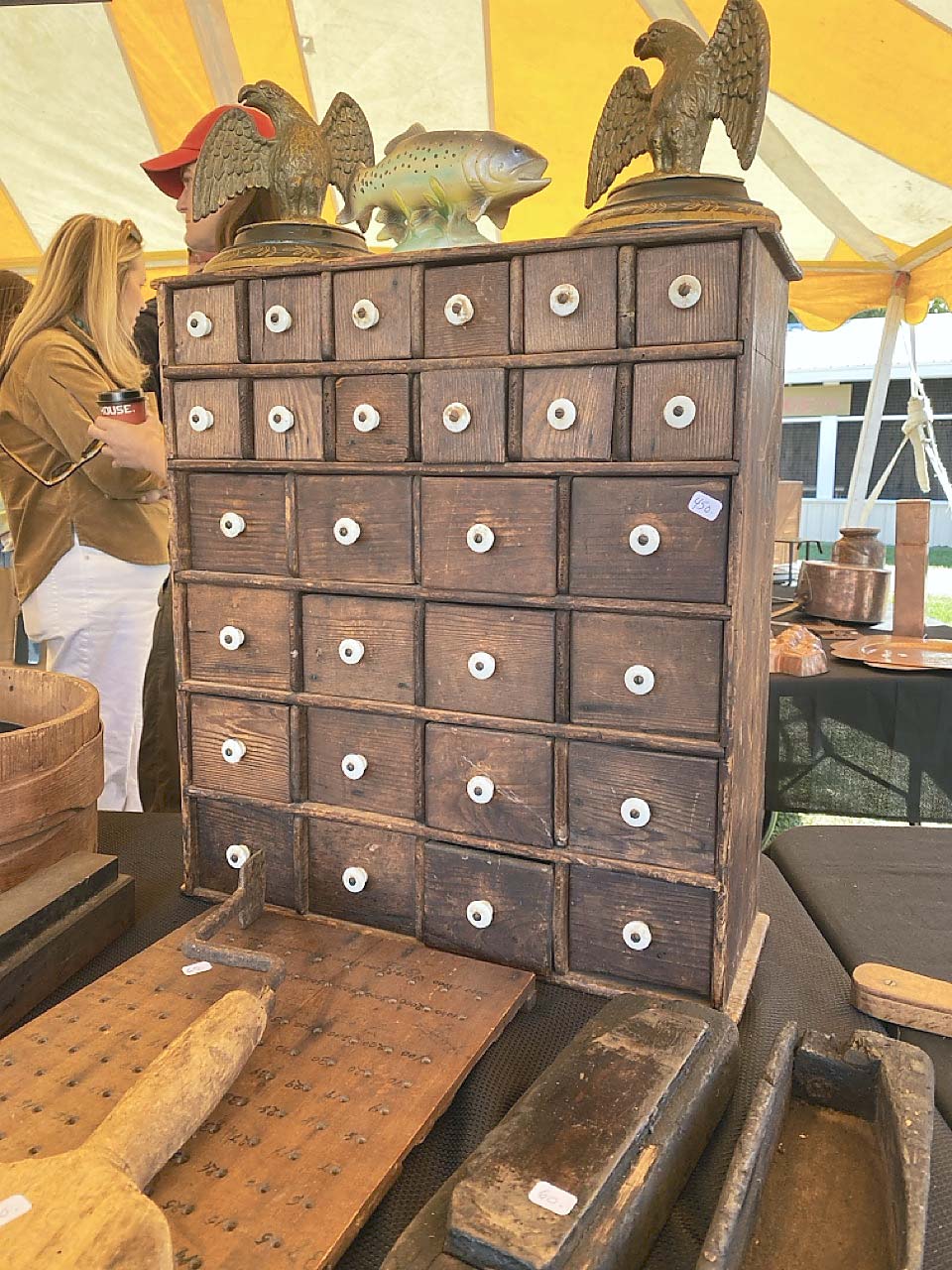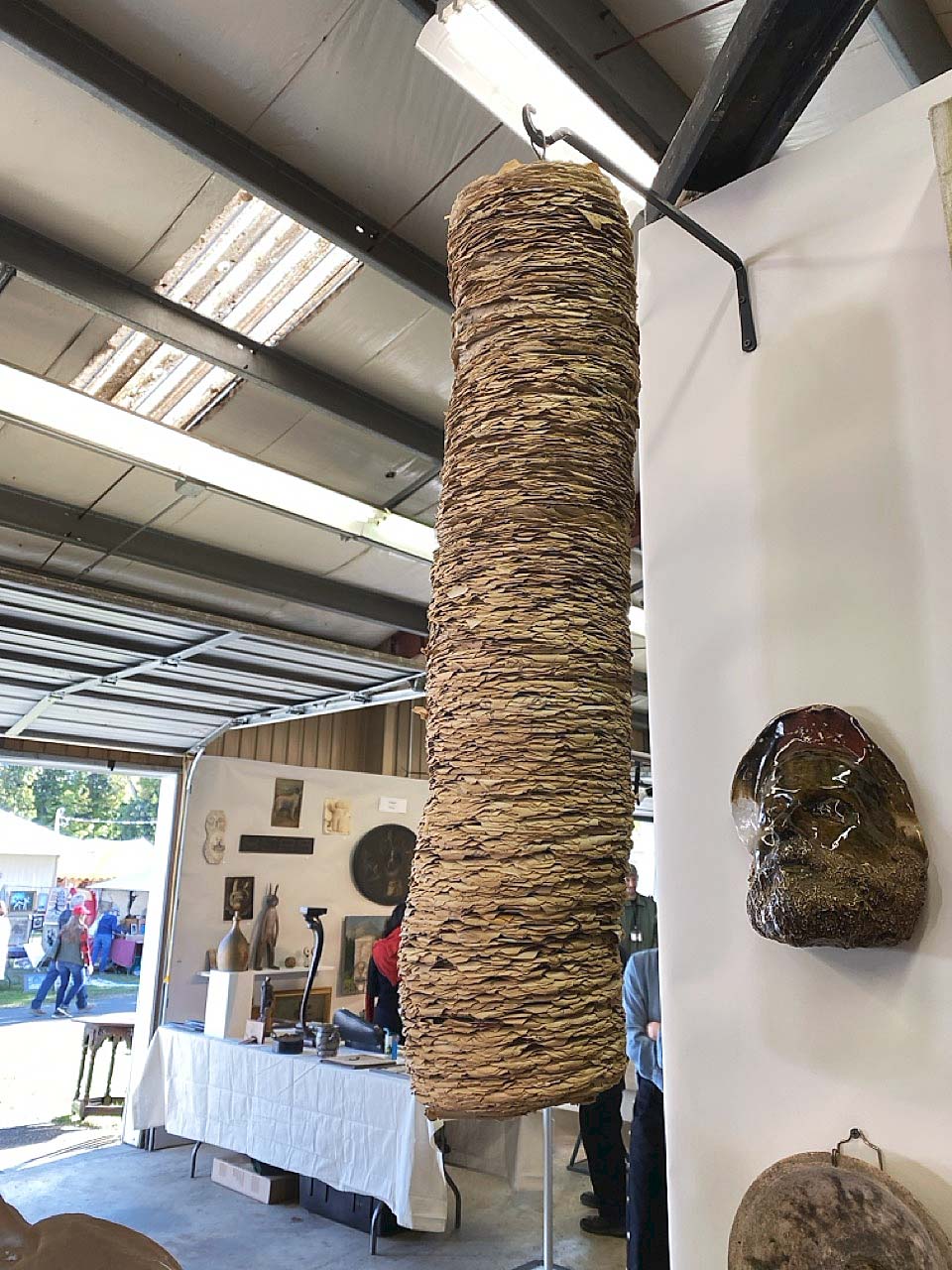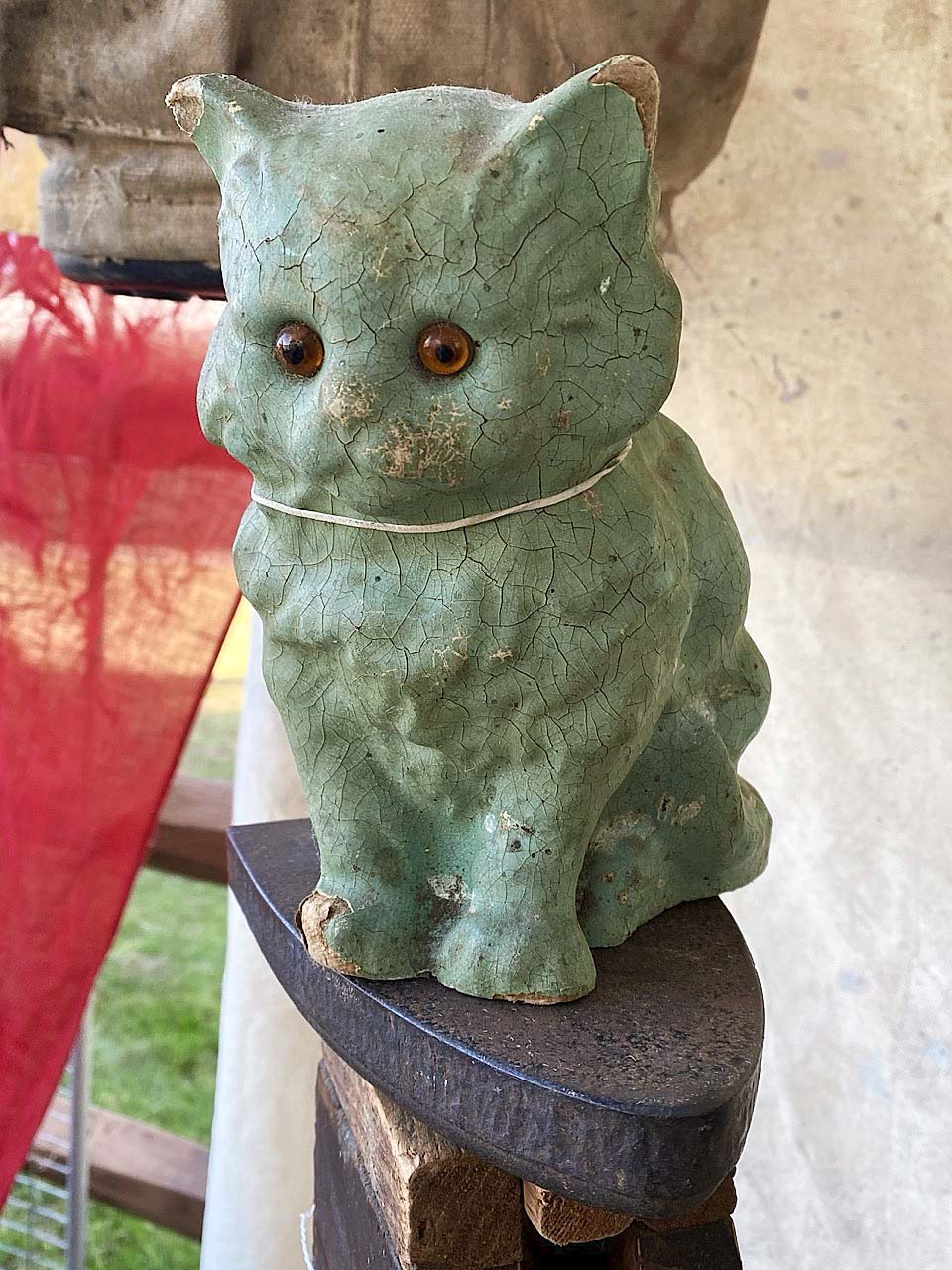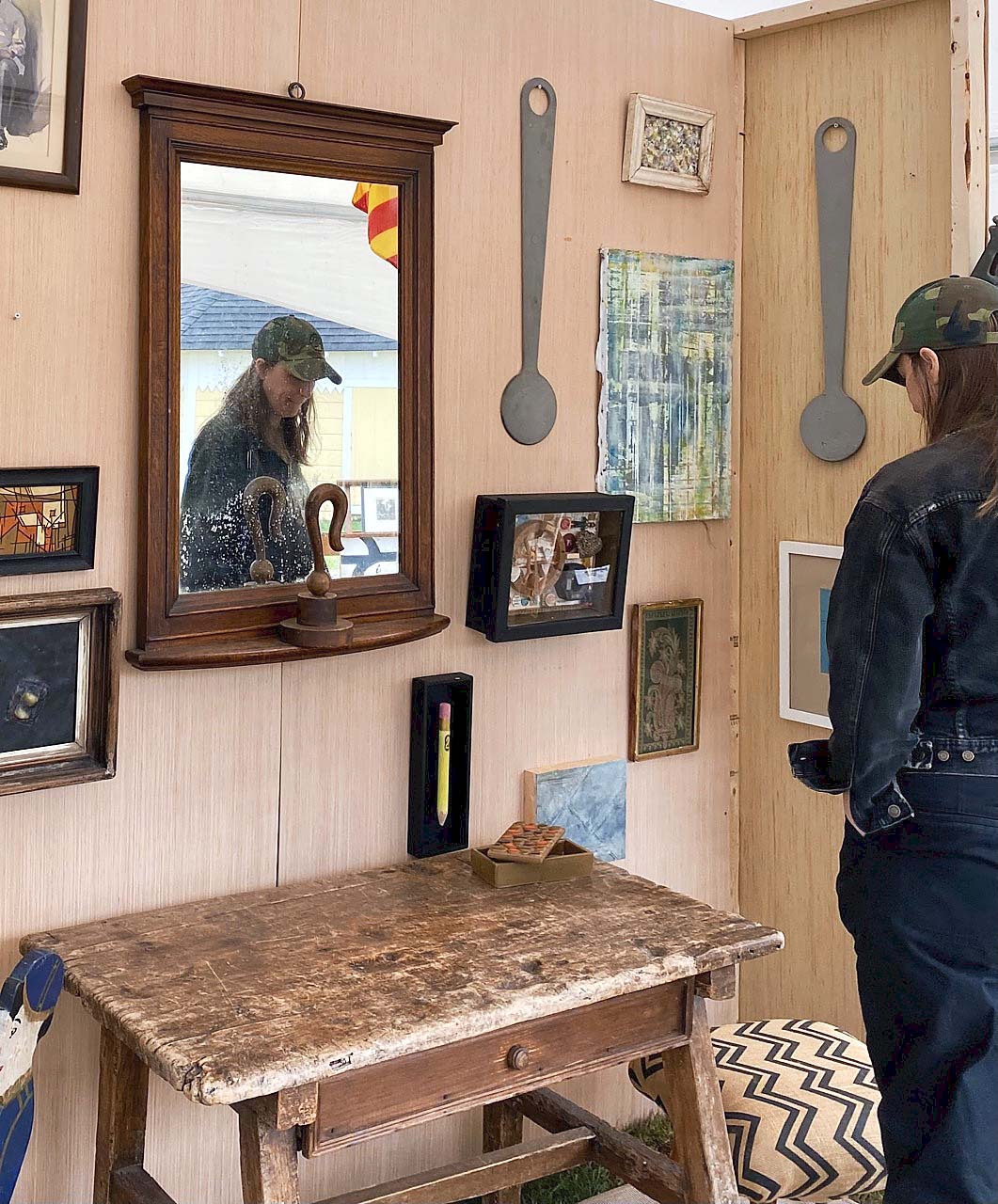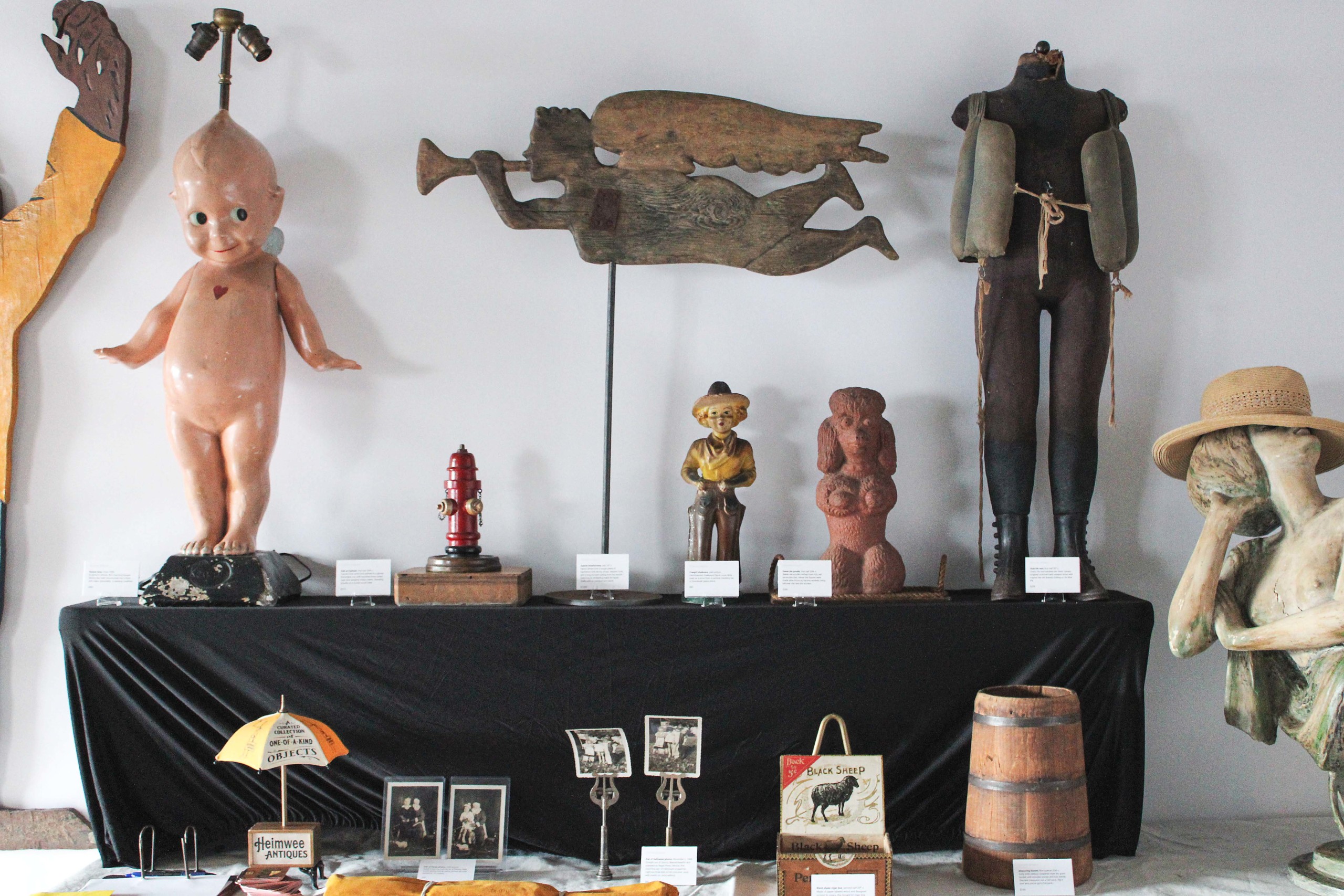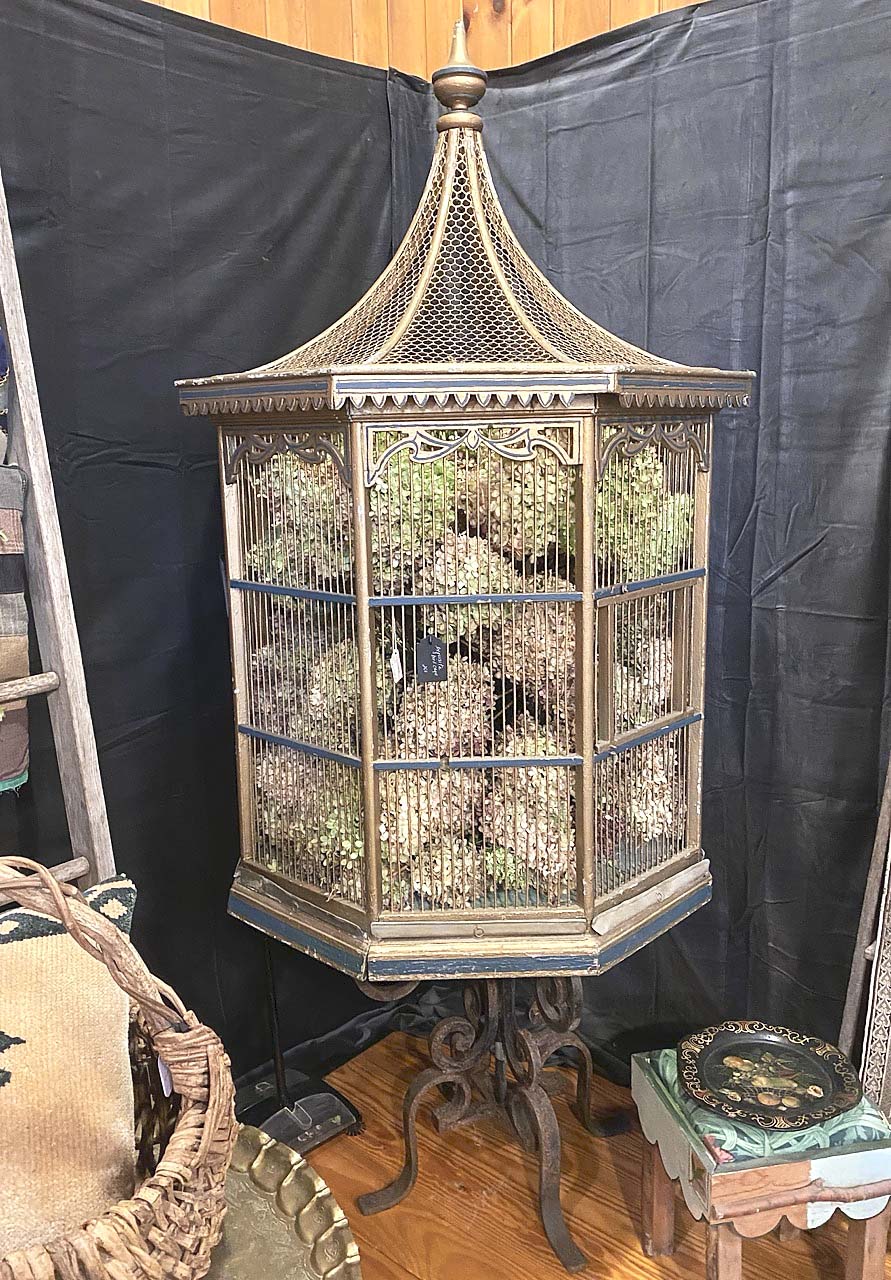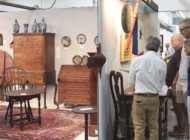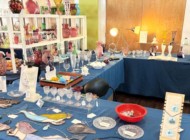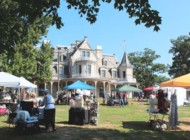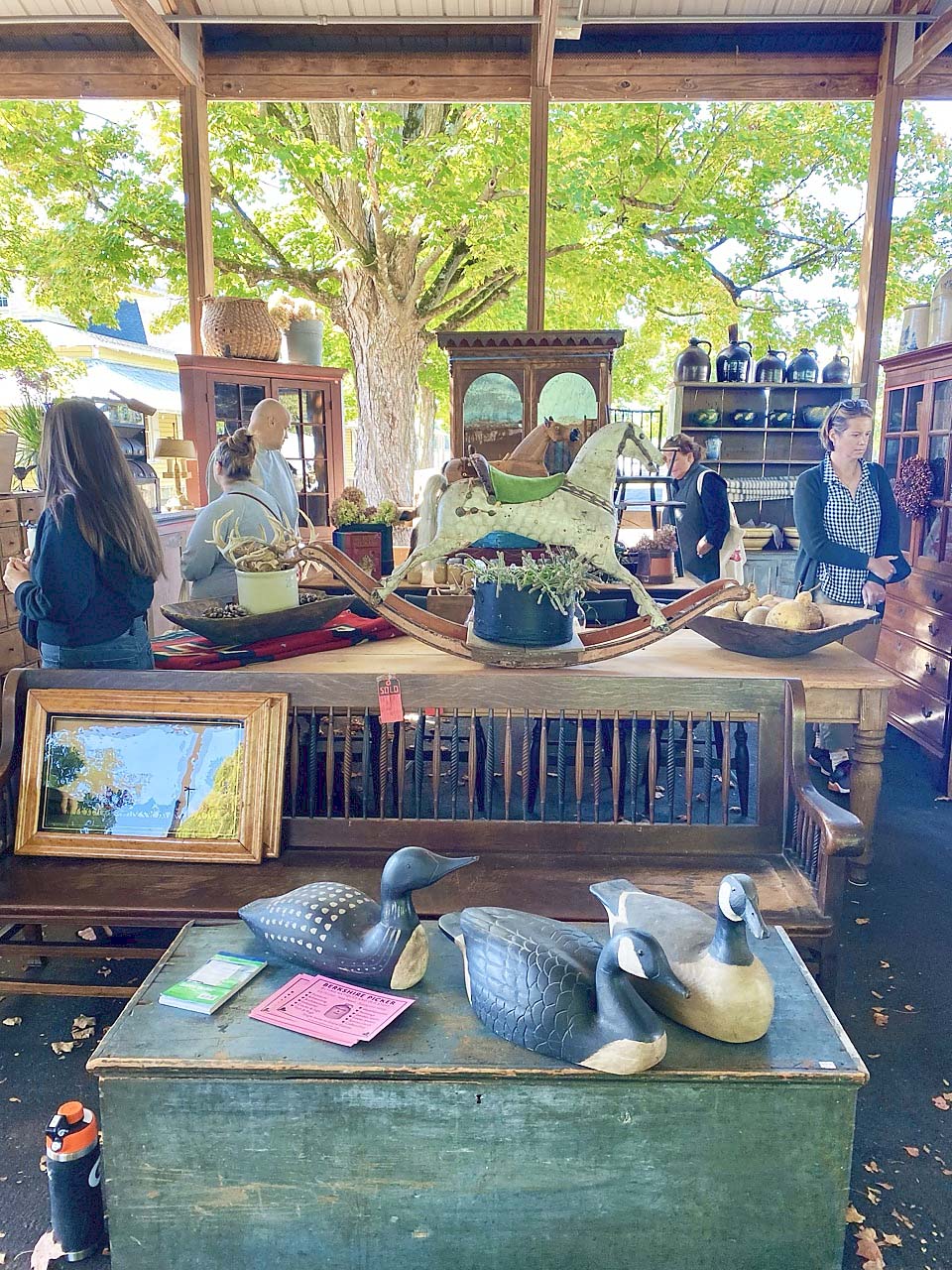
“This is nothing, I have a warehouse full of stuff,” said Mike Mason of Berkshire Picker, West Stockbridge, Mass.
By Z.G. Burnett
CHATHAM, N.Y. — The Taconic Antiques Fair (TAF) closed the summer season with what its younger attendees might call a “mic drop” or, in the general parlance, a resounding success. Despite the glorious weather forecast, opening a new market is as exciting as it is nerve-wracking, yet both its showrunners and exhibitors did not anticipate nearly 3,000 visitors to the Columbia County Fairground during the weekend of September 20-21. These are a credit to the high quality of its vendors and TAF’s promotional campaign. Advertisements appeared in print, on social media, flyers and local notices and even a guest spot on NPR. Exhibitors promoted the event on their own social media accounts and brought guests from farther afield. Those who answered TAF’s call were met with 77 booths of “Art & Objects,” “Ephemera & Books,” jewelry and vintage clothing.
A few years after the pandemic-era exodus from New York City and Brooklyn, the Hudson, N.Y., area is a thriving destination for art and design, now more so than ever. Many creative professionals relocated their businesses upstate and other city-dwellers looking for a quieter life set down new roots in the surrounding towns. The majority of those who came through TAF’s gates were either in “the business” or existing customers of it, with a contingency of locals who had never attended a market of this kind. Overall, attendees mostly represented a considerably younger age bracket, between the ages of 20 to 60, and this reporter has never seen so many babies and children at any other antiques event. Though each booth had its showpieces, dealers specifically brought a wide price range to make sure no one would leave empty-handed.
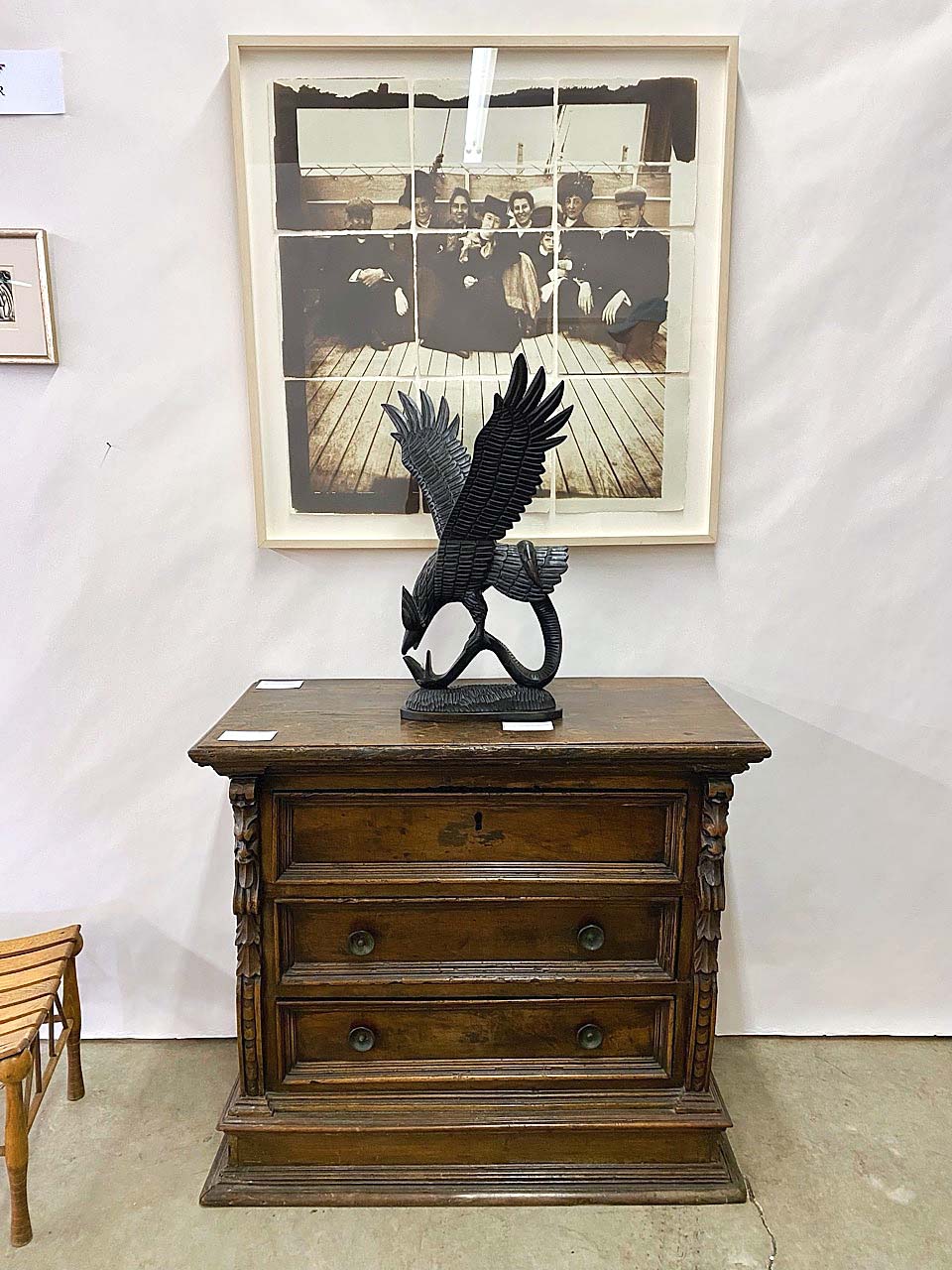
Boar Gallery, New York and Connecticut, displays three centuries of decorative art and design in one simple but harmonious arrangement.
Organized by Chance & Patina of the Threadbare Show, Found Object Show and Nameless Art + Design, most of the exhibitors have been working with the showrunners for years. Yet for Boar Gallery, New York and Connecticut, this was their first in-person show after operating fully online through the gallery’s website and Instagram account. Taking a more minimalist approach than most booths, Boar’s carefully chosen objects were selected not by category or origin, but by aesthetic unity. One such pastiche included only three objects. An early Eighteenth Century walnut commode from Italy contained three drawers and was decorated with gargoyles, supporting a 1930s German folk art sculpture of an eagle taking flight with a snake, chip-carved in ebonized wood. Surmounting these was a wood engraving on paper that was signed, dated and numbered by sculptor, typographer and draftsman Eric Gill (British, 1882-1940). Boar reported a number of sales by the fair’s end, including a signed and dated steel “Padma” chair from David Provan (American, 1948-2024) and a circa 1915 etching of a young foal by Renée Sintenis (German, 1888-1965).
Nearby, Fritz Antiques, Troy, N.Y., created an entire sitting room in its booth with goods on every surface. One of the largest objects offered was a three-quarter portrait showing “a woman of means” by Cornelis de Vos (Flemish, 1584-1681). His work is characterized by accurate, honest portrayals of facial features that brim with expression. This subject, though plain by today’s standards, is pensive and observant. She glances past the viewer as though watching something just over our left shoulder. Much more emphasis was placed on her delicate hands that emerged from detailed lace cuffs, each wrist decorated with a gold and jeweled bracelet. One hand clutched an elaborately bound book, likely a devotional of some kind, while the other draws attention to a single ruby ring on her index finger. Even more intriguing is the portrait’s frame, which was of the same period but was cut down to fit this canvas.
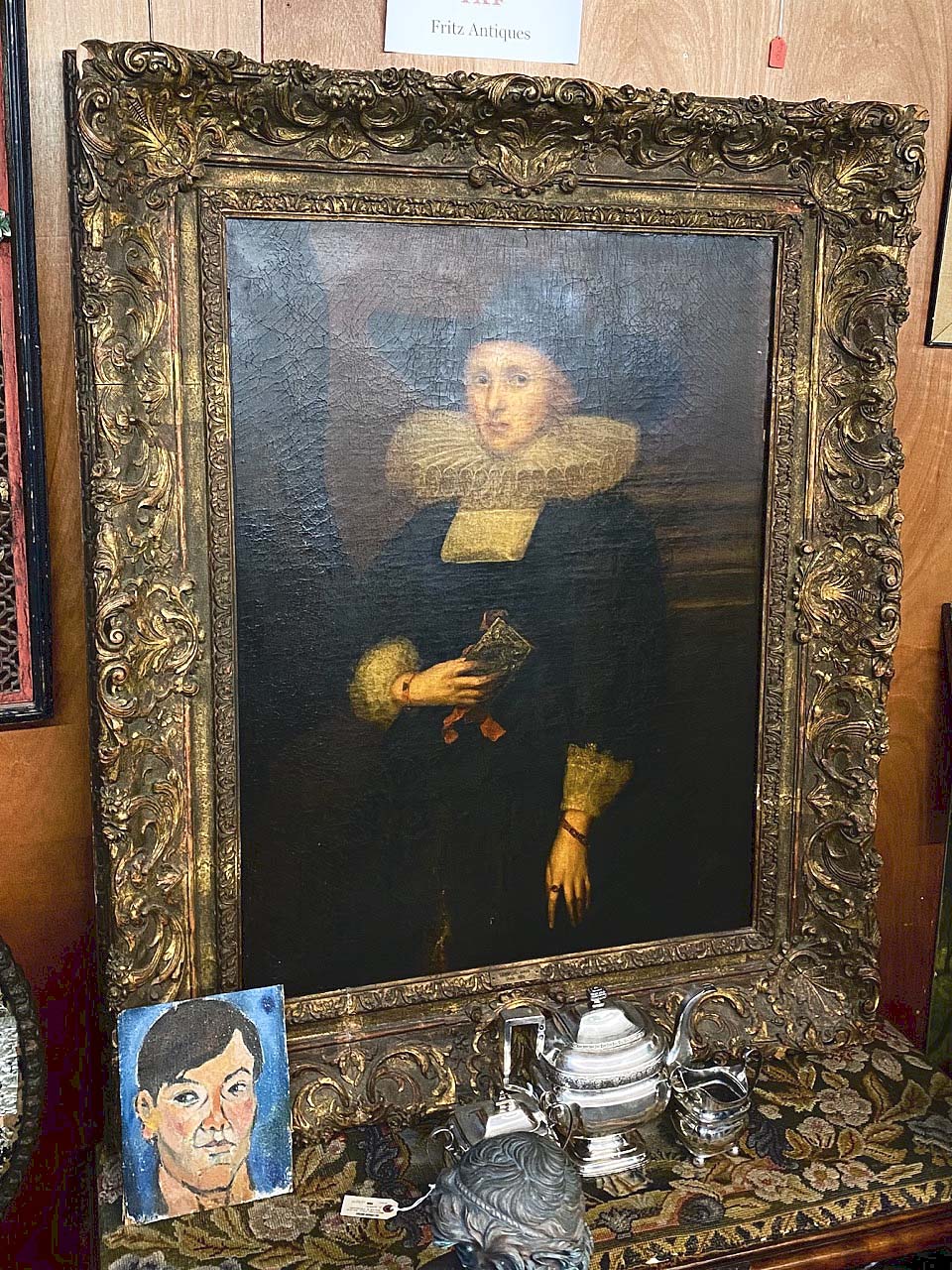
Enclosed in a modified giltwood frame, this portrait by Cornelis de Vos was the centerpiece in the booth of Fritz Antiques, Troy, N.Y.
No less striking was “Paddle Face,” a Twentieth Century multimedia sculpture from South Road Antiques, New York City and Stanfordville, N.Y. Measuring 34 inches high, it was made from a fence post and other assembled materials including leather ears. “I don’t usually go in for whirligigs,” said owner Susan Weschler. “But there’s just something about him!” Others thought so too, and “Paddle Face” was sold by the first day’s end.
Eric Oglander of tihngs [sic], Ridgewood, N.Y., brought a number of “make-do” objects. All antique Windsor chairs are unique, however Oglander’s was in its own league. The original Nineteenth Century seat showed paint worn down to the woodgrain through decades of sitting, and retained all four of its legs with perhaps only one mismatched runner. The entire bow and spindles were lost or broken at some point, and replaced with a less graceful, but not unpleasing, substitute of a crooked bent wood frame and supports that were much higher than their predecessors. Finally, rocking rails were added to the chair’s stump legs, creating an “ultimate” Frankenchair that did not last two hours for sale at TAF.
Earlier and more solid by design was a late Eighteenth Century door offered by New England exhibitor Robin Stephens. “Fresh” from the Ratcliff House of Richmond, Mass., the door was original to its timber frame. The 1780 house still stands today, and has been noted in architectural surveys of the area for its massive center chimney, chambered fireplaces and functioning beehive oven. The house is still known by this name to locals due to its previous inhabitants, William and Marylyn Ratcliff, who inhabited the home for 55 years.
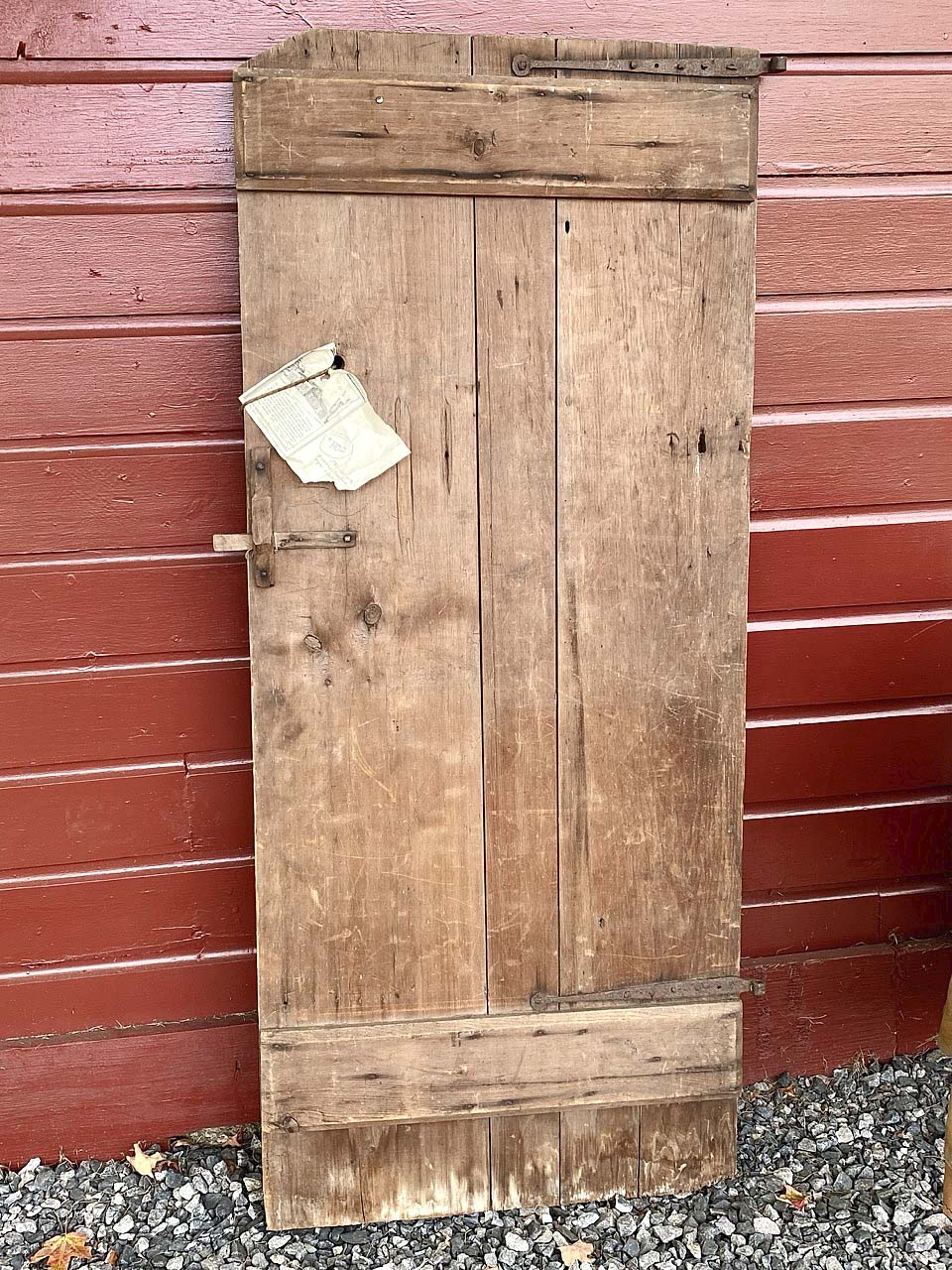
This period door was fresh from the 1780 Ratcliff House of Richmond, Mass., and presented by New England dealer Robin Stephens.
Folk art is sometimes mysterious by nature, but every now and again the objects come with firsthand stories. Visitors to Francis Nestor’s booth of Cottage + Camp, Millerton, N.Y., were greeted by a monumental urn filled with seasonal gourds. Though huge and heavy, Nestor explained that it had done a good deal of traveling. The urn was made in upstate New York by a local artist who brought it with him to Mexico, then returned to the area after about 10 years. Though it did not find a buyer this time, Nestor is happy it’s “home” and was pleased with the fair’s sales overall.
Direct provenance is rare at shows like TAF, and even rarer are those who will go digging for it. Emily Caretti of Tea Street Vintage, Kutztown, Penn., specializes in clothing and textiles, though any such dealer will tell you that it’s impossible not to pick up other goods along the way. Among the colorful racks of clothing in her booth hung a hand-painted sign that read, “Oh how happy! Minerva and Delas.” Caretti shone with excitement when asked about it, lifting up the banner to reveal a faded but still legible 1920s photograph of a young couple standing in front of a car. On its wheel cover was “Just Married” with the same banner stretched across the rear window. Caretti found the photo during the last days of an estate sale, then discovered the folded, flatted banner in a trunk shortly after. “It sounds crazy, but it felt like I was being led to it,” she recounted. Stranger things have happened.
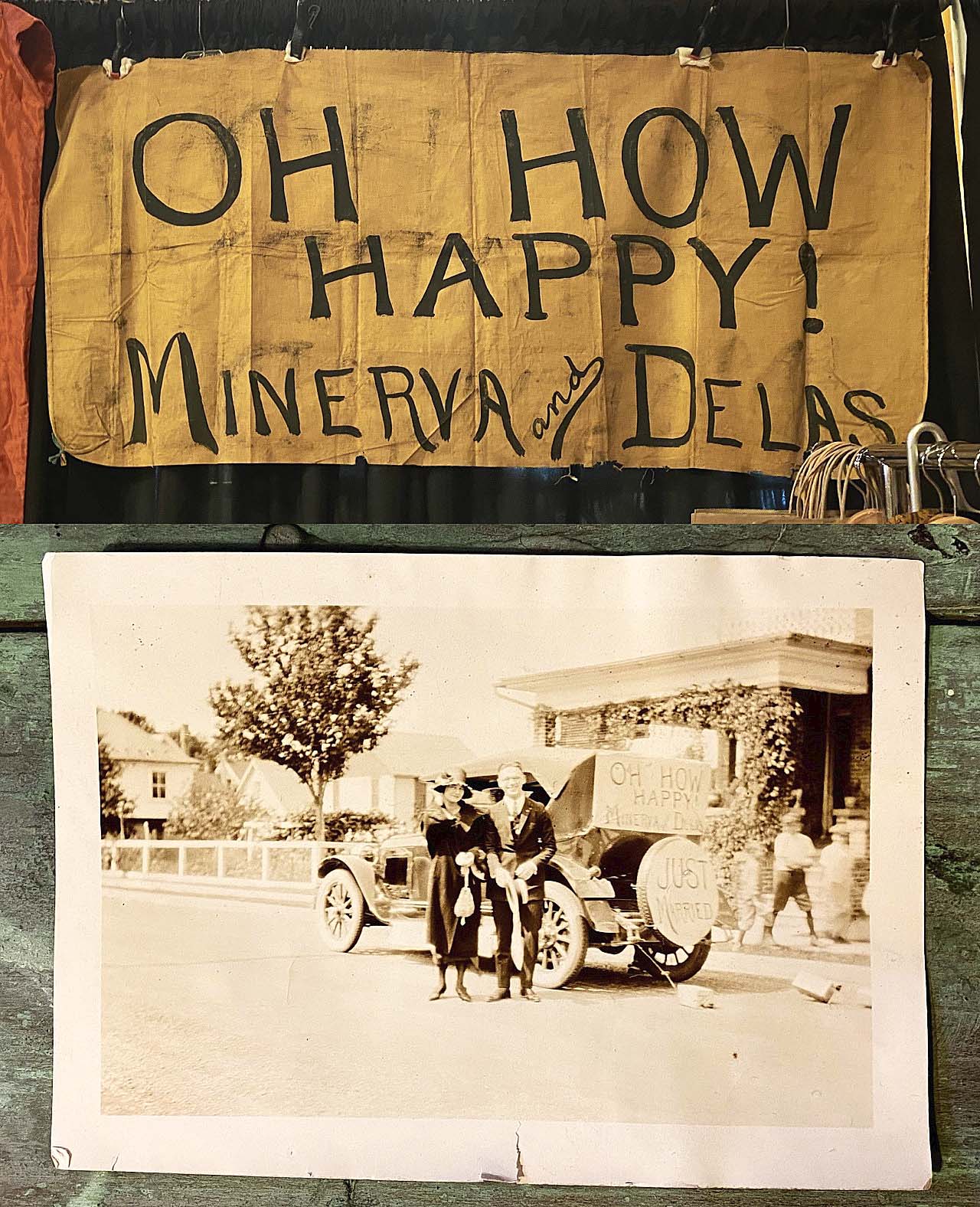
This 1920s banner and its accompanying photo were almost separated forever if not for the determination of Tea Street Vintage, Kutztown, Penn.
The fair’s debut was nothing short of a pleasant surprise. In economically uncertain times within a market bemoaned by many as “not what it used to be,” the number of attendees and overwhelmingly positive reports from exhibitors marks an important shift in consumer tastes. Not all young buyers are rushing off to Pottery Barn or Ikea, favoring the highest quantity instead of quality. Conscientious customers still seek that one special object that will become an heirloom to new generations, whether it’s a sturdy chest of drawers or a wooden rat carved and painted pink by unknown hands almost a hundred years ago. “The ‘wind’ of this business is blowing,” said one organizer during setup on the second morning. “We’ve built the ship and put up the sail, now we just need to catch it.” It seems that TAF just did.
Next year’s edition is projected to occur around the same date. For information, www.taconicantiquesfair.com.

